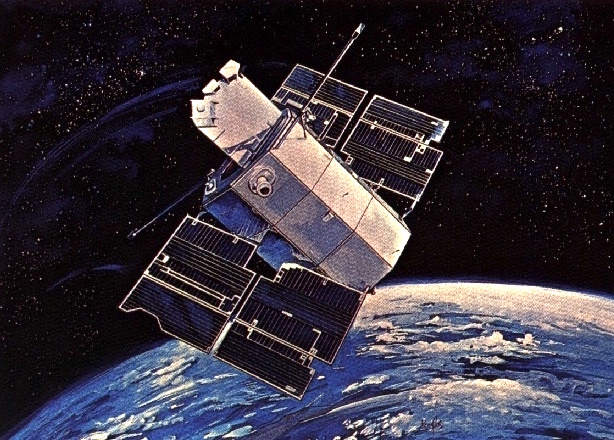

OAO-2 with solar arrays extended
OAO-2 with its shroud

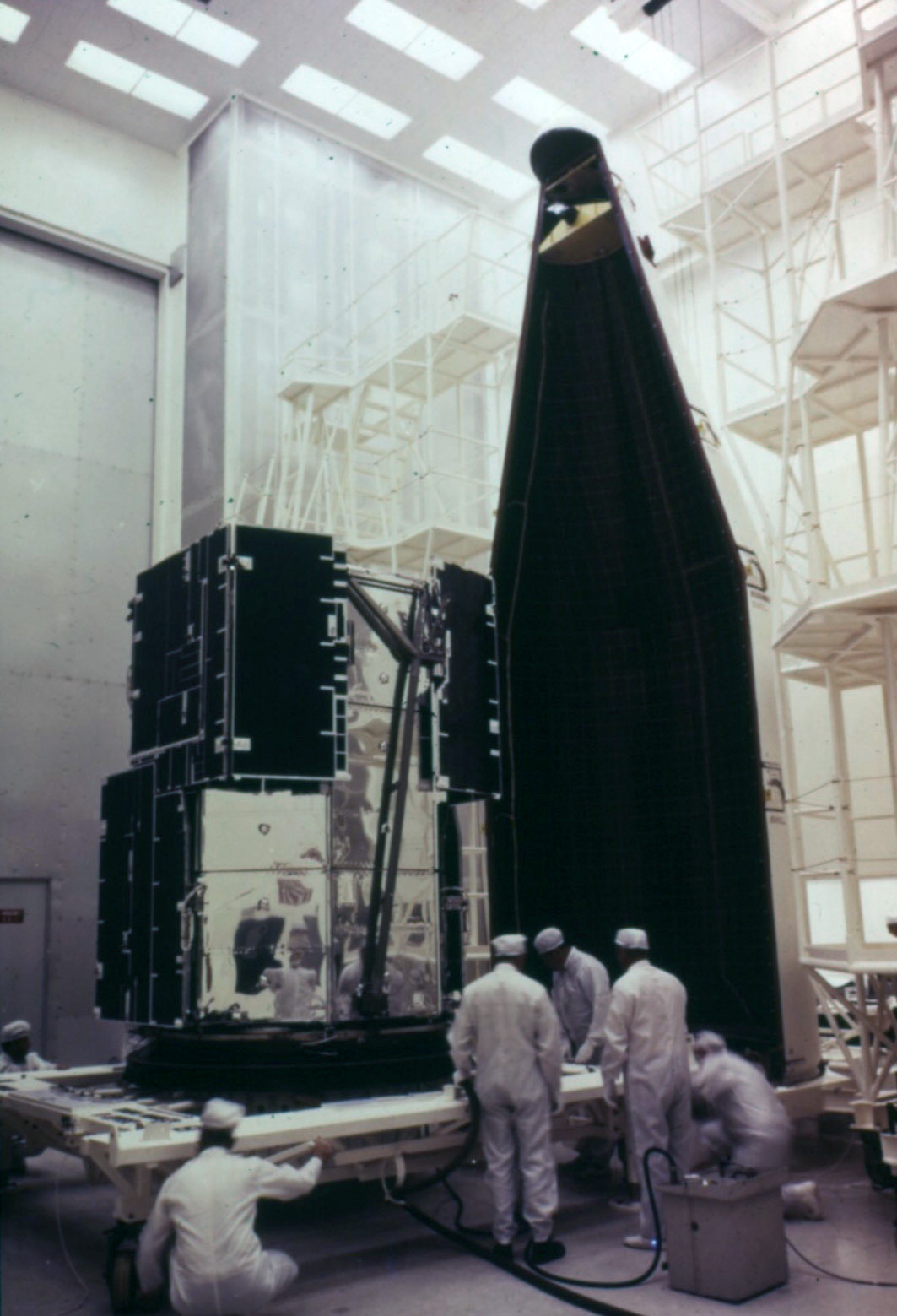
Side view of an engineering unit for a WEP photometer
(Text book added to give scale)
Front view of an engineering unit for a WEP photometer
(Text book added to give scale)
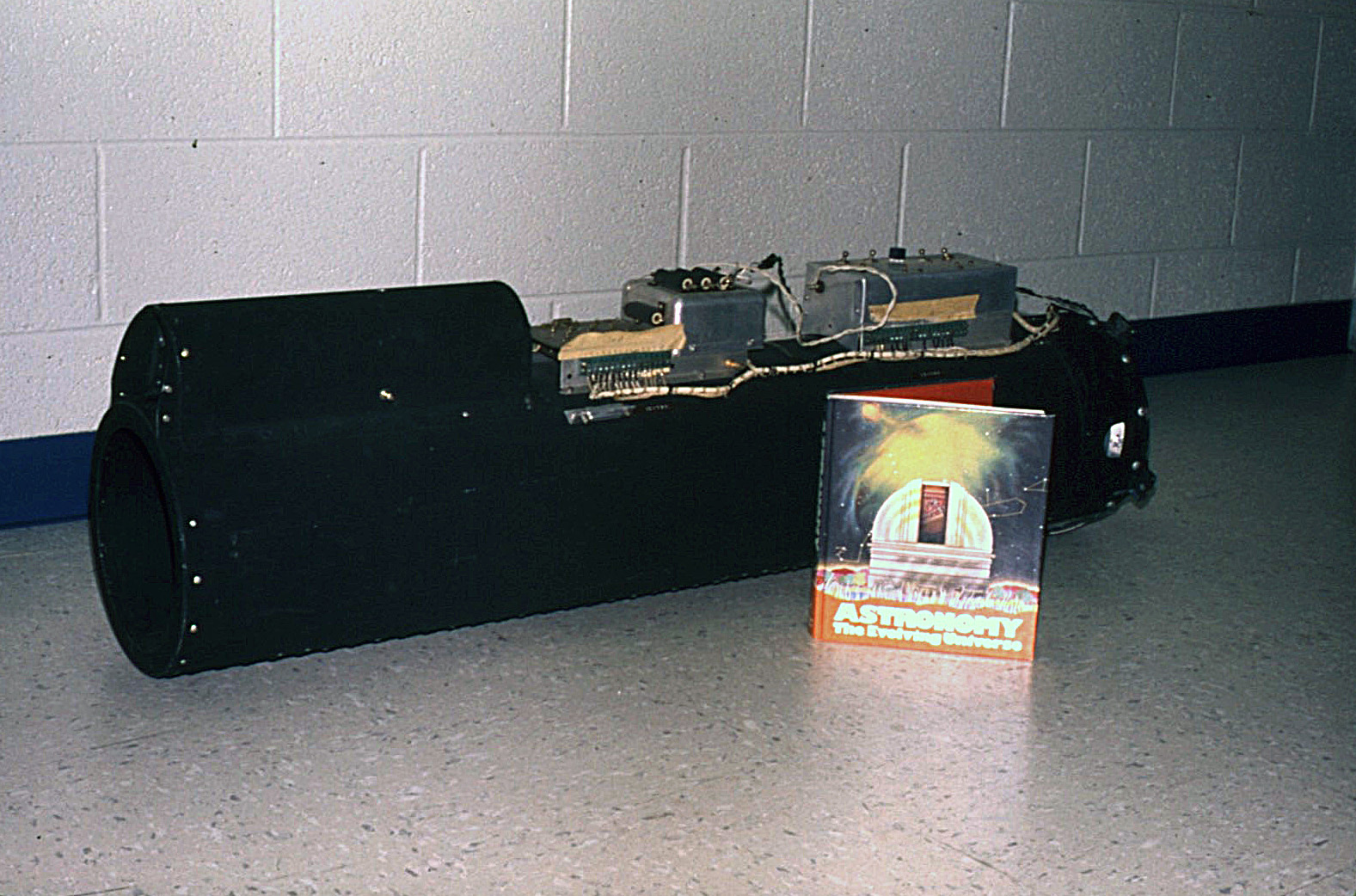
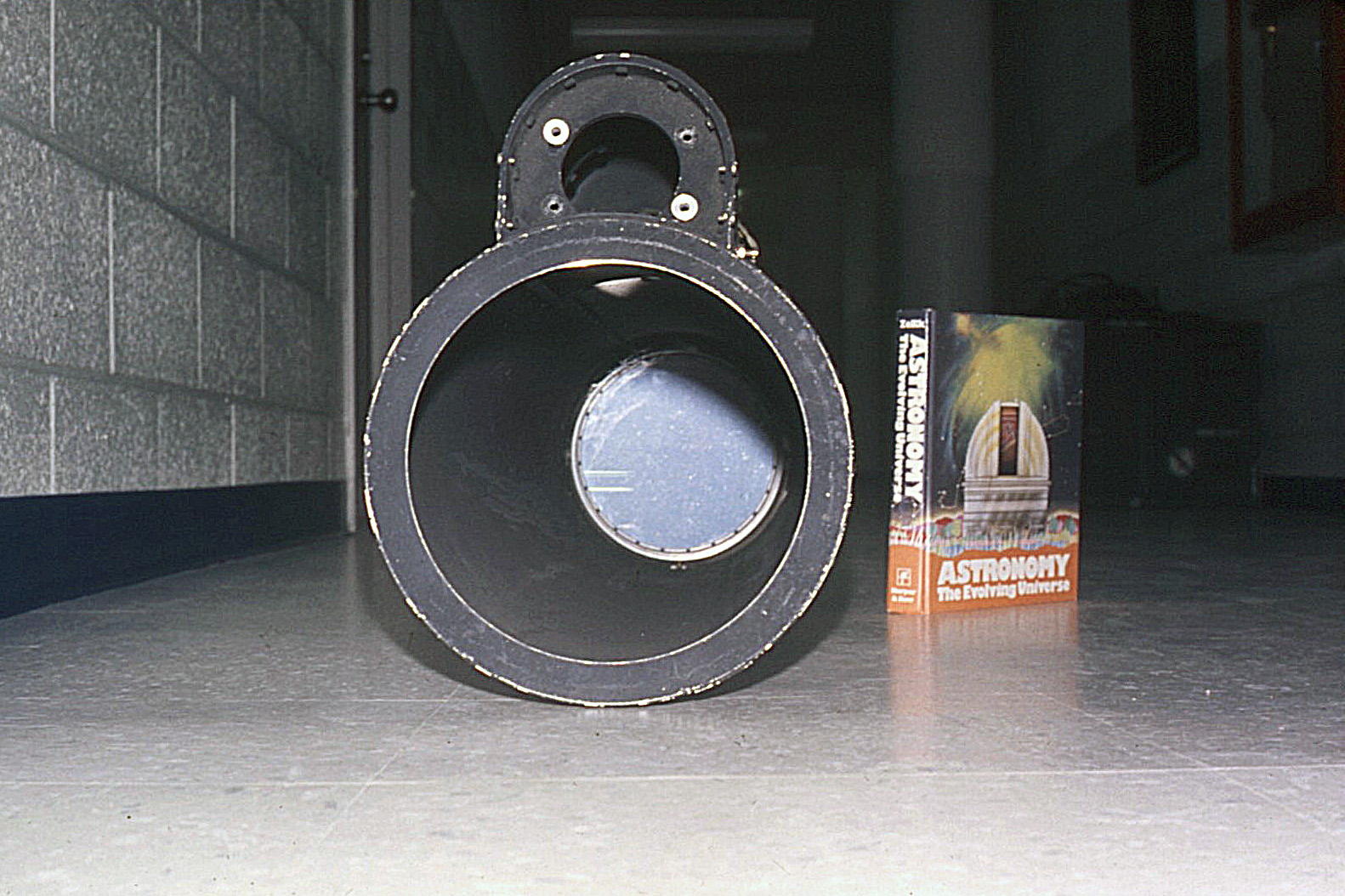
This is a collection of images of the Orbiting Astronomical Observatory-2 and people involved in its operation. OAO-2 contained two research packages to study the sky in the ultraviolet: the University of Wisconsin's Wisconsin Experiment Package (WEP) and the Smithsonian Astrophysical Observatory's Celescope. The spacecraft was double ended with WEP looking out one end and Celescope looking out the other. The plan was for each package would be used to make observations for a week. Then the spacecraft would be flipped to the other side so that the other package could be used to make observations. Both ends had a closable door to protect the telescopes not being used from sunlight.
The WEP contained a nebular photometer, two scanning spectrophotometers, and four stellar photometers. The stellar photometers used 10 arcmin circular fields and the nebular photometer had a 16 arcmin circular field. Each photometer had three filters, a dark slide, and a Sr-90 Cerenkov radiation source for calibration. The central wavelengths of the filters ranged from 1330Å to 4250Å. One spectrophotometer covered 1050Å to 2000Å with a resolution of 10Å. The second spectrophotometer covered about 1800Å to 3600Å with a resolution of 20Å. A fuse for the nebular photometer failed about a moth and a half after launch so little data were acquired using it.
Celescope contained four ultraviolet-sensitive television cameras, each generating a 256x256 image of a 2º field. Filters on the cameras provided measurements in four bands: 2100Å to 3200Å, 1550Å to 3200Å, 1350Å to 2150Å, and 1050Å to 2150Å.
OAO-2 was launched on December 7, 1968, and, following the failure of the high-voltage power supply for the WEP, was turned off on February 13, 1973.
Because my role was as an astronomer for Wisconsin, most of the photos I have deal with WEP and its people. Mike Molnar provided some of the images, some are official NASA photos, Otis Brown and Jim Valenti each took one, and I took the others.
There is a web page at Wisconsin's Space Astronomy Lab, I think created by Marilyn Meade, that has a more information about the observatory. A NASA webpage with historic photos and videos celebrates the 50th anniversary of the launch of OAO-2 at https://svs.gsfc.nasa.gov/12916.
OAO-2 (Norad 3597) is still in orbit and will be for centuries. You can find when it is visible at your location at the the N2YO.COM site, the In-The-Sky site, or by using a smartphone app such as GoSatWatch. It is normally below 6th magnitude, but might brighten to 4th if the solar paddles or flat sides are favorably oriented.
| An artist's conception of the observatory in orbit | Another artist's concept |
|---|---|

|

|
|
OAO-2 with solar arrays extended |
OAO-2 with its shroud |

|

|
|
Side view of an engineering unit for a WEP photometer (Text book added to give scale) |
Front view of an engineering unit for a WEP photometer (Text book added to give scale) |

|

|
Mike Molnar took the following photos at Wisconsin’s Space Astronomy Laboratory on Park Street while waiting to OAO-2 to be launched.
|
Ya-Yue Van |
Dave Ward, Al Holm, Ya-Yue Van, Dave Jenner, and Skip Schiffer |
|---|---|
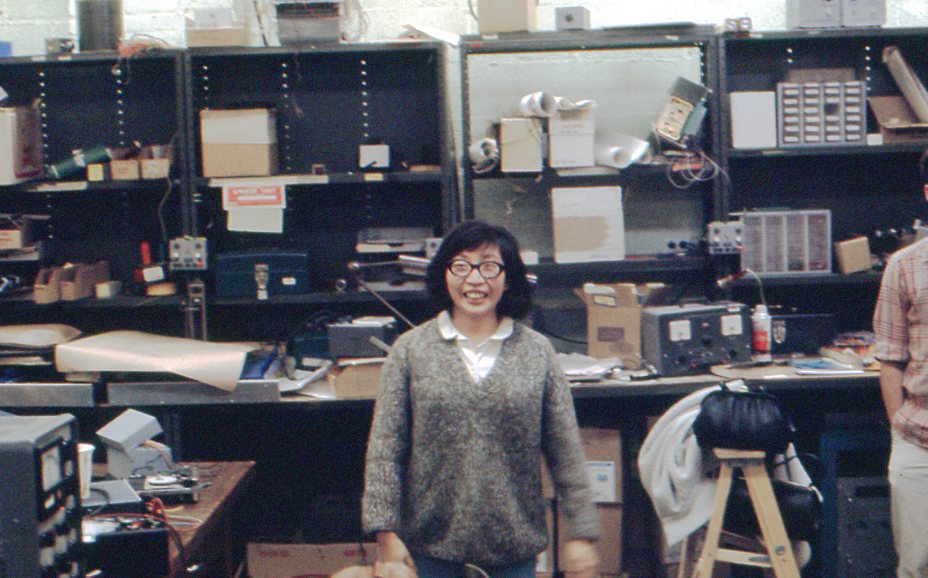
|

|
|
An employee of the Space Astronomy Laboratory with a blackboard showing key launch events
|
|
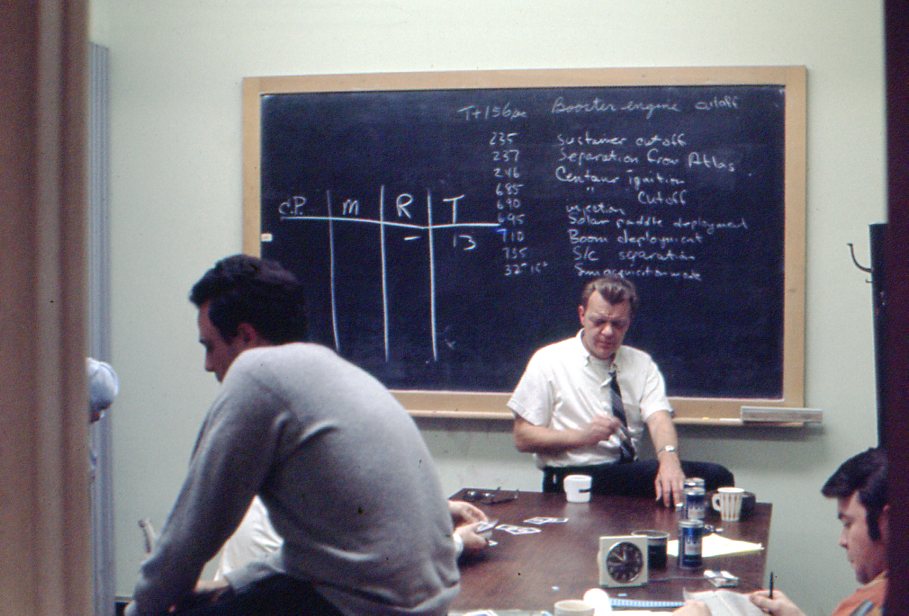
|
|
Atlas-Centaur carrying OAO-2 into orbit Image from https://svs.gsfc.nasa.gov/12916 |
Al Holm, Ya-Yue Van, Dave Jenner, Carol Burkhalter and Don Michalski toasting a successful launch |
|---|---|

|
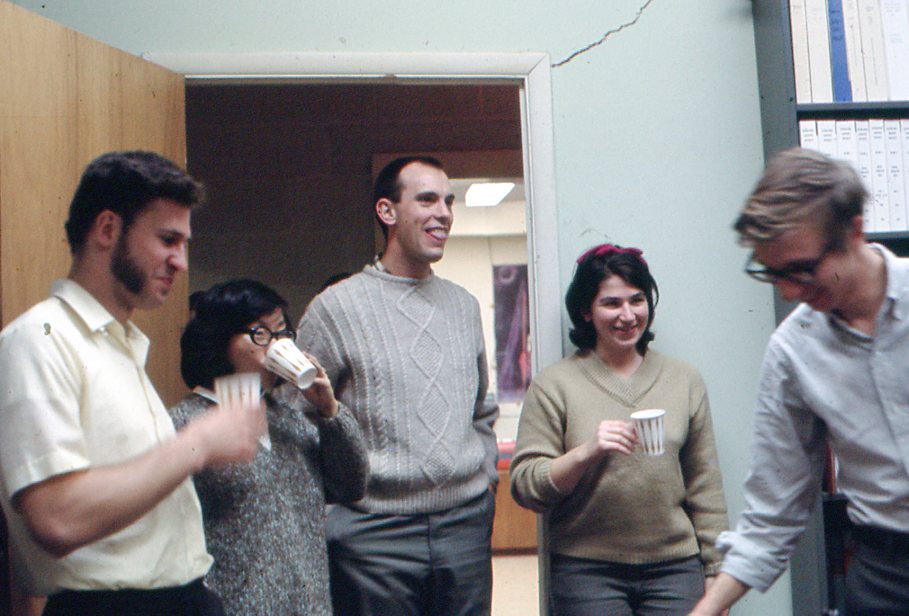
|
The OAO-2 control center was in the basement of Building 14 at Goddard Space Flight Center.
|
Building 3/14, OAO's home at Goddard, at sunrise
|
NASA publicity photo of science instrument staff: Dr. Charles "Chuck" Lillie, Hugh Brown, Otis Brown, and two SAO staff members |
|---|---|
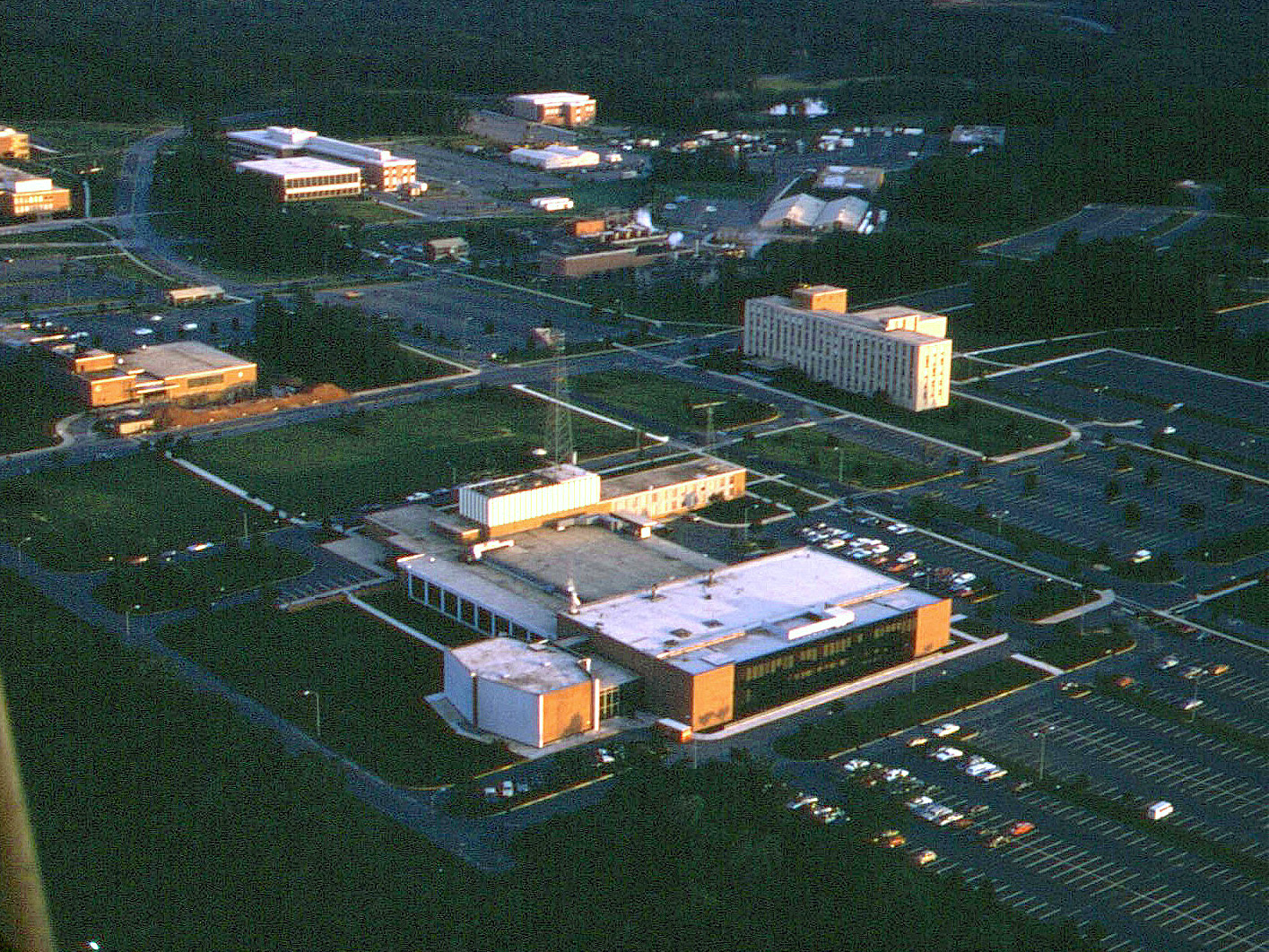
|
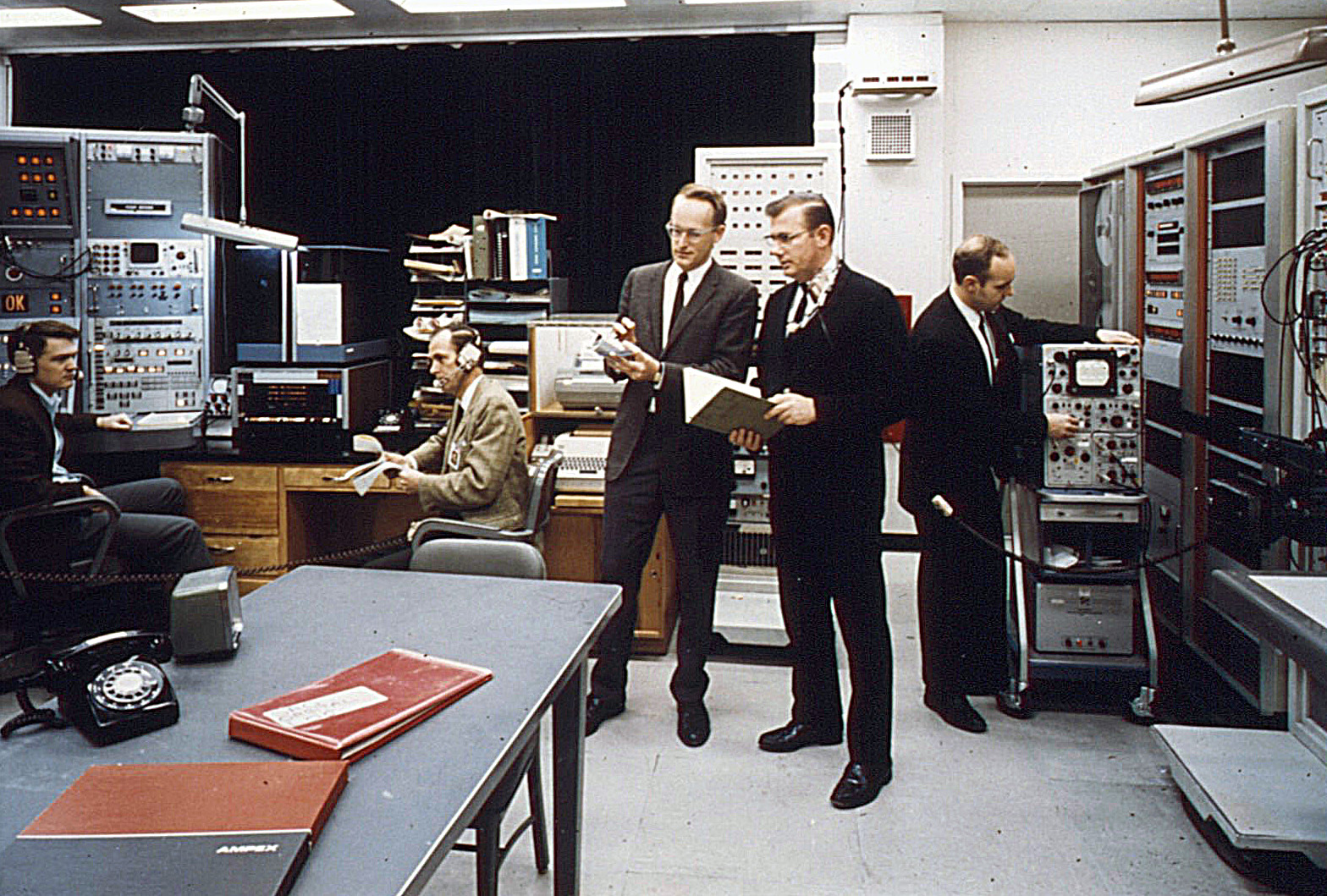
|
|
NASA publicity photo of OAO-2 staff Dr. Lillie (Wisc), Dr. John McNall(Wisc), and Fred Chiccone (Grumman) |
|---|
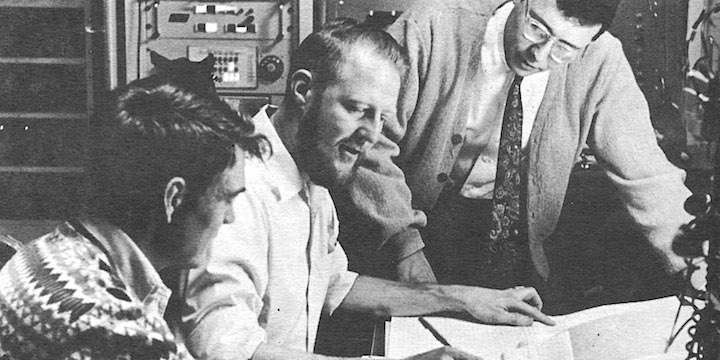
|
|
The OAO-2 operations staff early during the mission |
|---|

|
Five organizations worked together to operate OAO-2, under the oversight of NASA/Goddard mission management.
|
Grumman's Superstar Poster |
Anniversary Party photo (from Jim Valenti) |
|---|---|
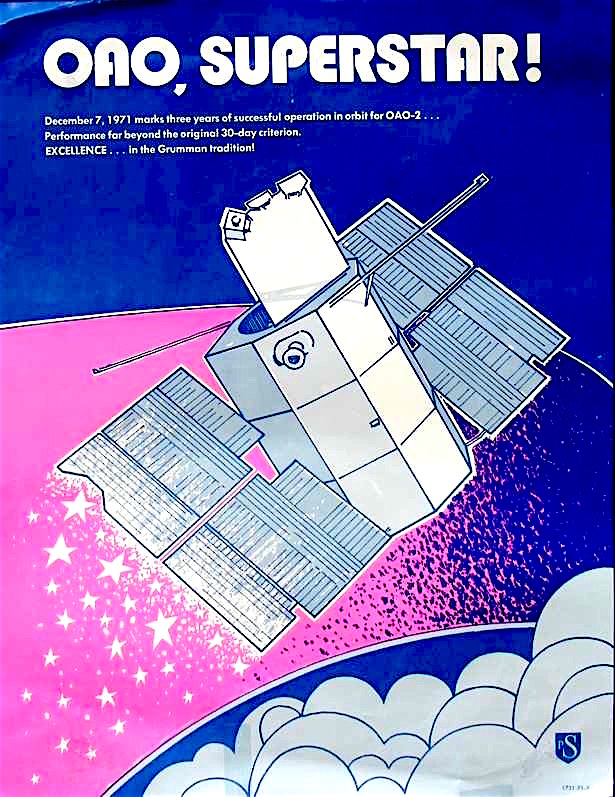
|

We can identify a few of the people in this image. Jim Harrison (Grumman) is standing at the back. Jim Gemmell (NASA/GSFC) is standing in front of Jim Harrison and looking away from the camera. Barbara Danieli (WEP) is the woman with blond hair to the right of Jim Gemmell. The face of Al Boggess (NASA/GSFC) looking at the camera can just be seen near the right edge of the photo. |
|
Al Holm at work in the WEP office in 1971 |
Grumman's analysis office |
|---|---|

|

|
|
Milestones plaques |
Flight control consoles |
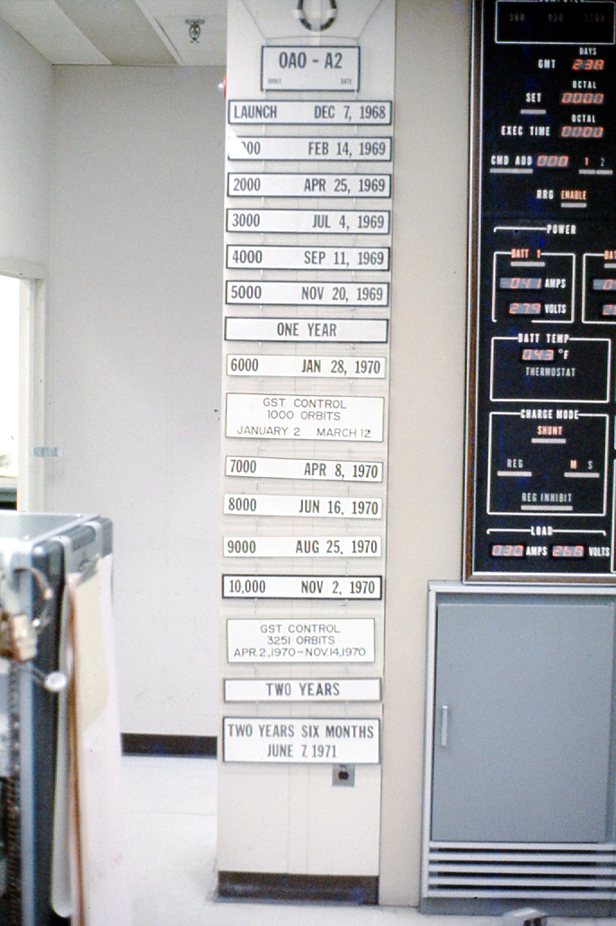
|

|
|
Computers |
More computers |
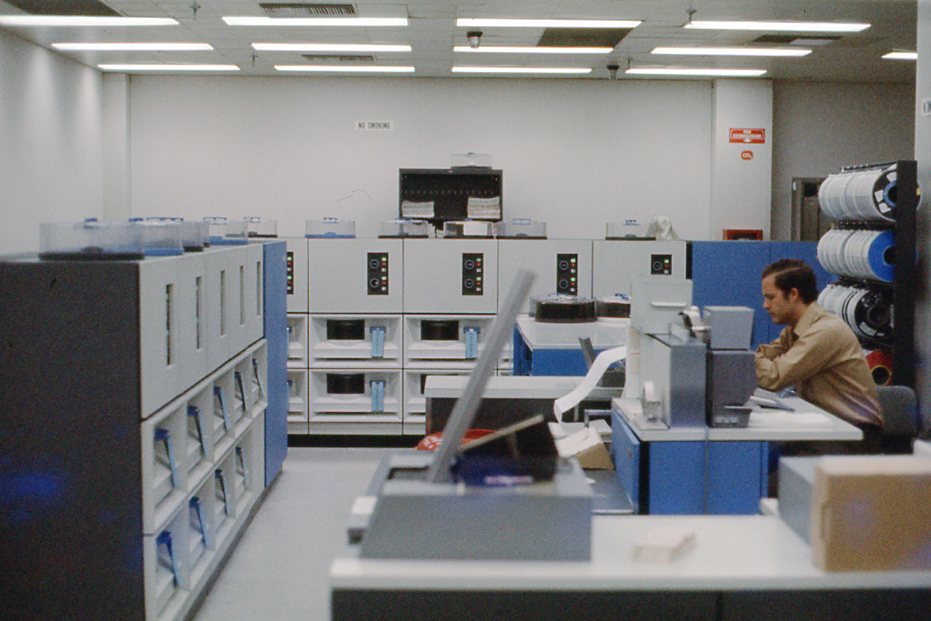
|
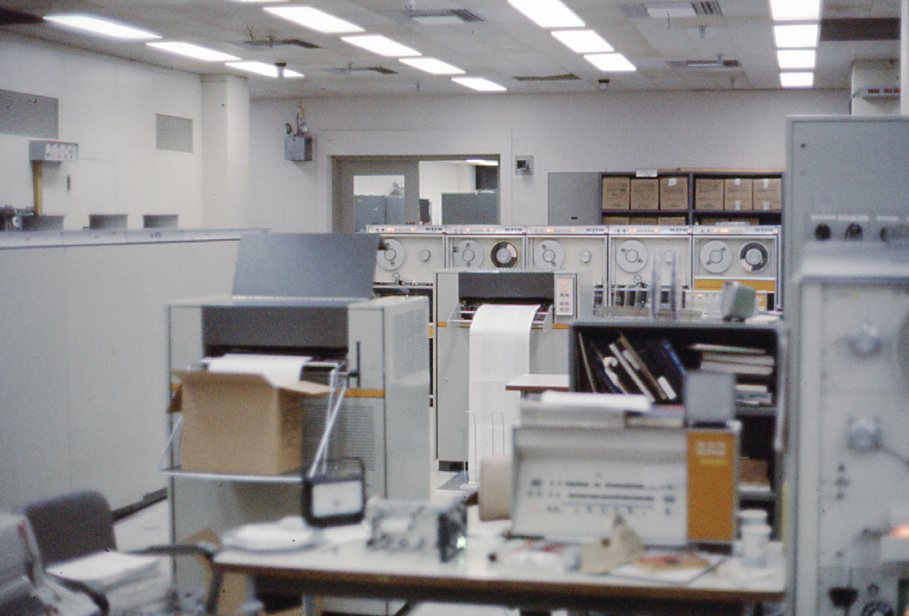
|
|
WEP Ground Operations Equipment (GOE) |
OAO-2 spacecraft operations status board |
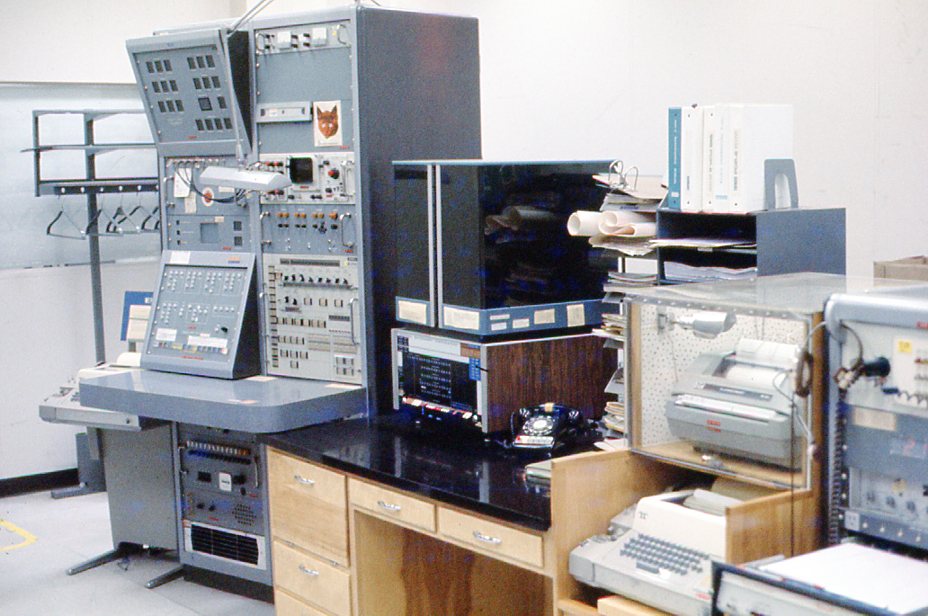
|
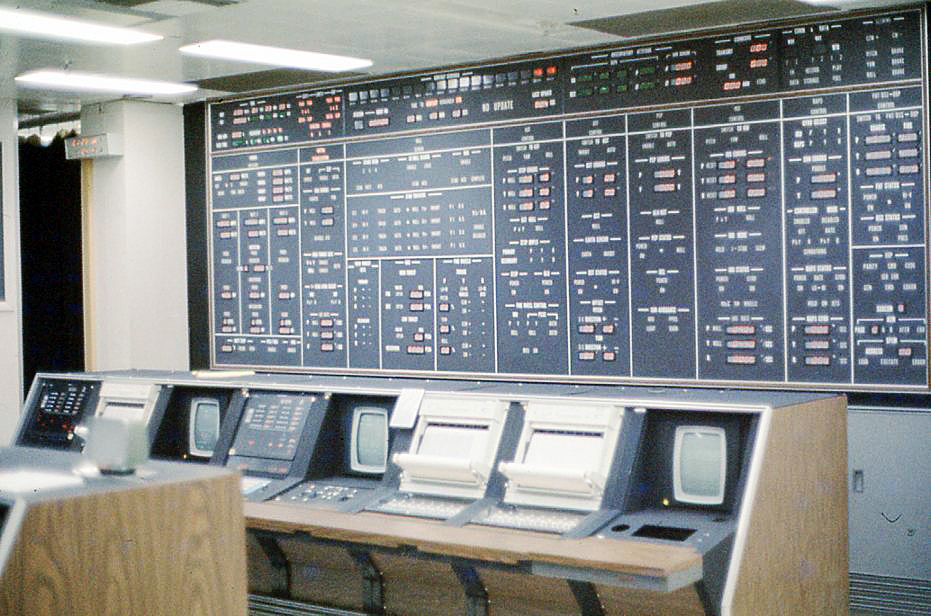
|
|
SPCS’s “Big George” Fredricks at a 360-65 printer - Jan 1972 |
Grumman’s Bob Leone, Project Operations Controller |
|---|---|
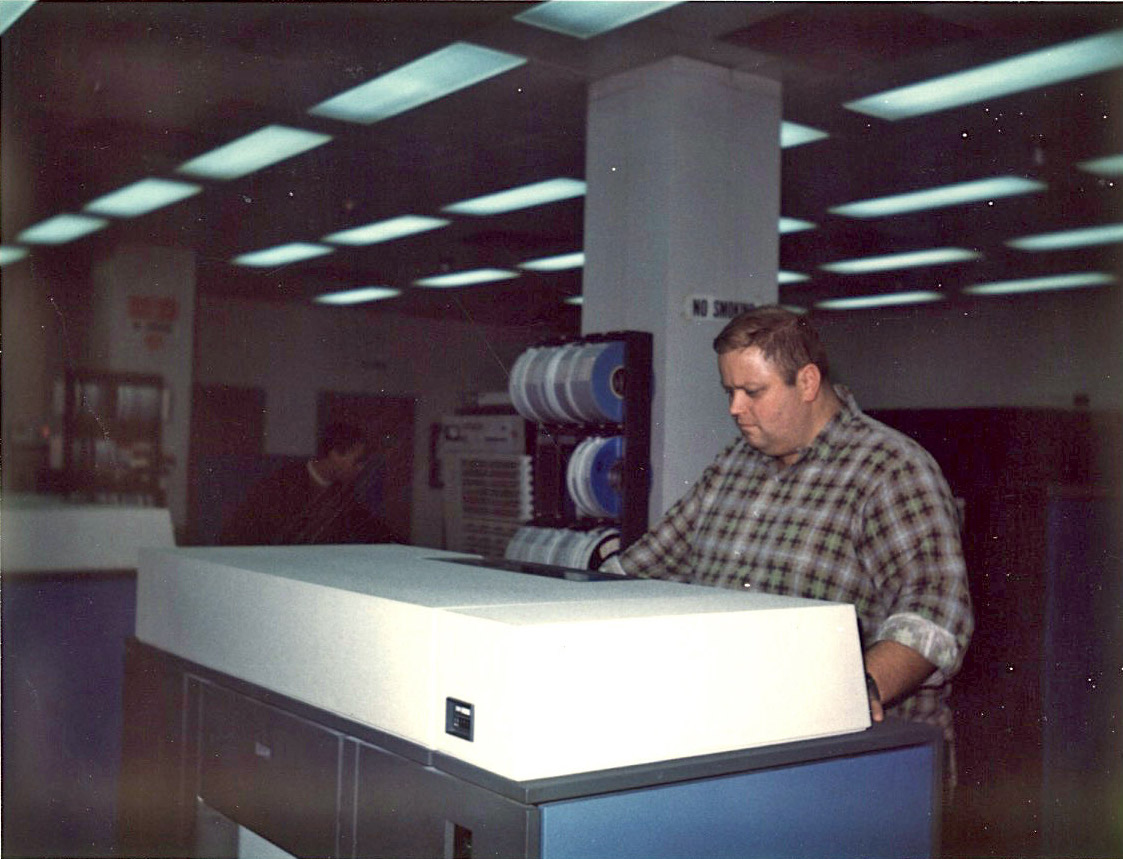
|

|
|
|
OAO-2 control center with Grumman staff |
|
Joseph Blazosky provided the following identifications and information.
Seated staff members at the consoles in the control center include, left to right, in the back row Ed Slabinski, Tom Keely, and Jim Young. In the front row are John Danner and Bob Leone. The standing man may be a Contact Controller. The big board in front displays telemetry giving the spacecraft's status. In the back, in the dark, is the Wisconsin GOE. The front row positions were responsible for Stabilization and Control and for Power. The back row, left to right, was the Spacecraft Controller, the Project Operations Controller (POC), and the Ground Controller. The Spacecraft Controller monitored the command memory operation and other subsystems not covered by the front row. The POC was the team leader and in overall control of the spacecraft. The Ground Controller handled all of the commanding and interface with the ground station personnel and the CCPS support staff running the SDS 930’s in the back room. Blazosky wrote, “Ultimately as the spacecraft got older and budgets diminished, we cut back to three people manning the consoles. The Ground Controller, the POC and the Spacecraft controller who monitored all of the subsystems and command memory execution. Occasionally we ran with two people; the Ground Controller and the POC who monitored everything. Those were interesting times.” |
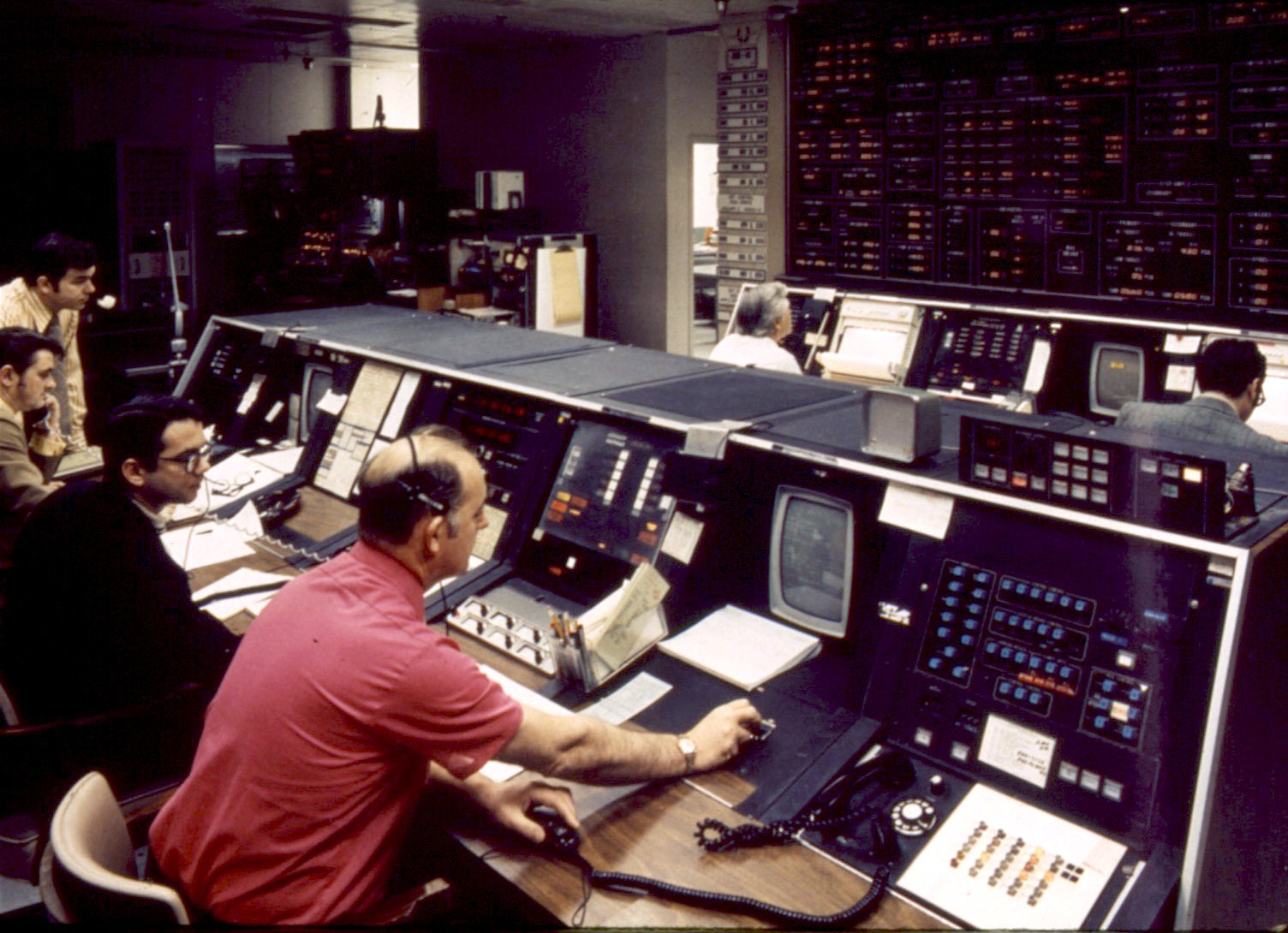
|
|
The OAO-2 status board |
SAO Camera 1 image taken at Rosman16163 to try to see Cen XR-3 |
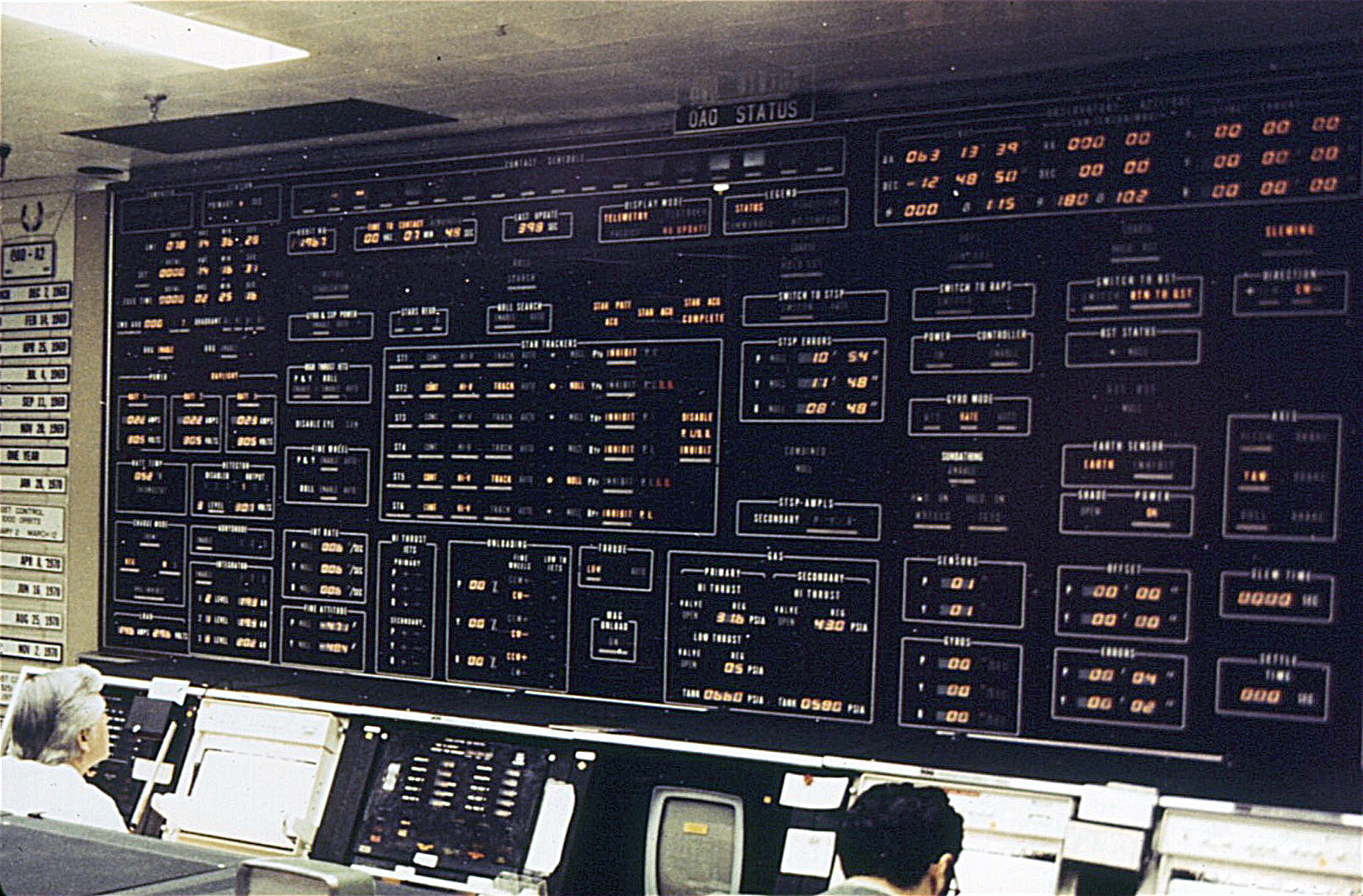
|
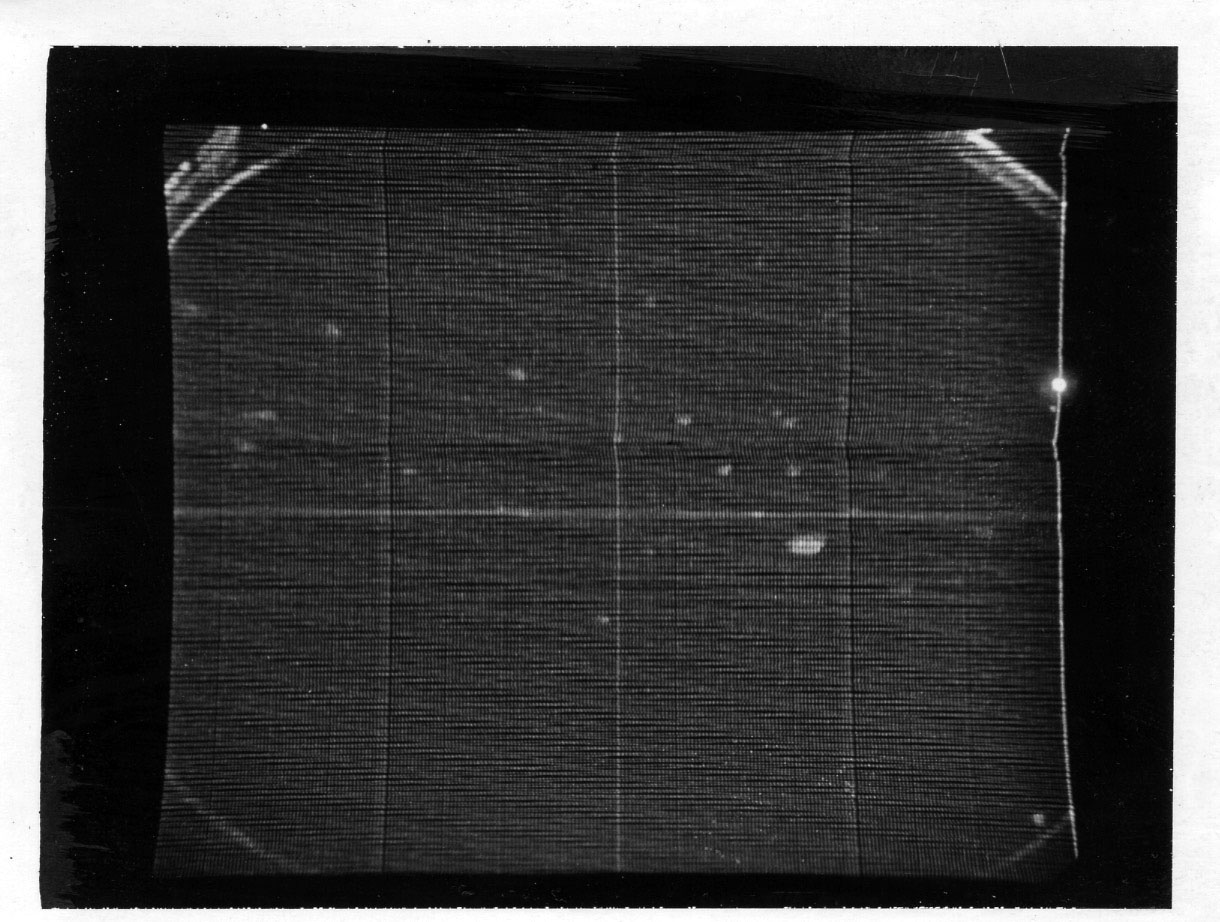
|
|
Otis Brown with WEP GOE - Jan 1972 |
|
|---|---|

|
Nearly all the observations by OAO-2 were obtained by commands processed through the Science Planning and Commanding System and transmitted to the telescope’s sequencer minutes to several hours before they were to occur. In this situation, the WEP GOE was only used to receive data after the observations occurred and to print out quick-look summaries of the results. However, the GOE actually had the capability to initiate commands to the Wisconsin Experiment Package. This capability was used on rare occasions, such as when measuring the light of a star setting through the Earth’s atmosphere to determine the composition of the upper atmosphere. |
A superstar, OAO-2 far exceeded expectations. So much so that in 1972, Grumman’s Director of Space Astronomy Dr. Peter Simmons convinced Action Comics to devote a Superman episode to space astronomy in their December, 1972 edition. Clark Kent is shown using the Large Space Telescope, the former name for the Hubble Space Telescope, and The Man of Steel is hit by OAO-2, which he vaporizes, clearing the way for the LST. That bold move helped convince Congress to restore funding for the LST.
I do not have an original of the page showing Superman vaporizing OAO-2, only a Xerox of it.
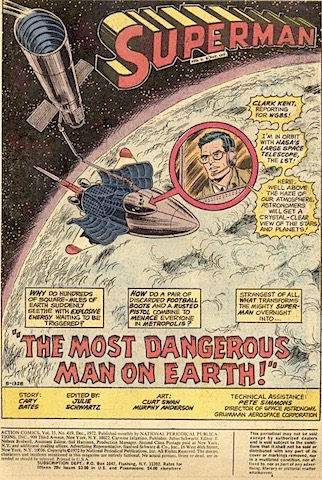
|
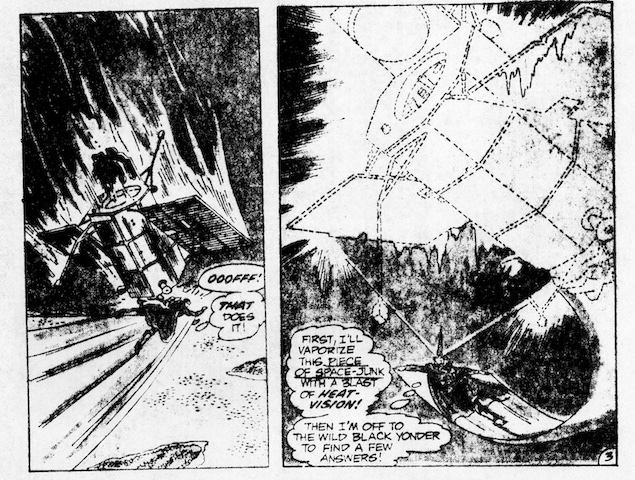
|
The OAO-2 did not wait for Superman’s heat vision to end its mission. Two months after the Action Comics issue, on February 1, 1973, the WEP’s high-voltage power supply failed, ending the telescopes’ ability to measure cosmic photons. However, the spacecraft is still in orbit and will be for hundreds and hundreds of years, an inert piece of “space junk”.
|
OAO-2 Status Board on February 14, 1973 OAO-2: 22,000 orbits; Launched Dec 7, 1968; Turned off Feb 13, 1973 |
WEP crew after turn-off, Feb 14, 1973: Data tech Sandy Howard, Charlie Wu, Al Holm, Dave Gottlieb, and Hugh Brown |
|---|---|

|
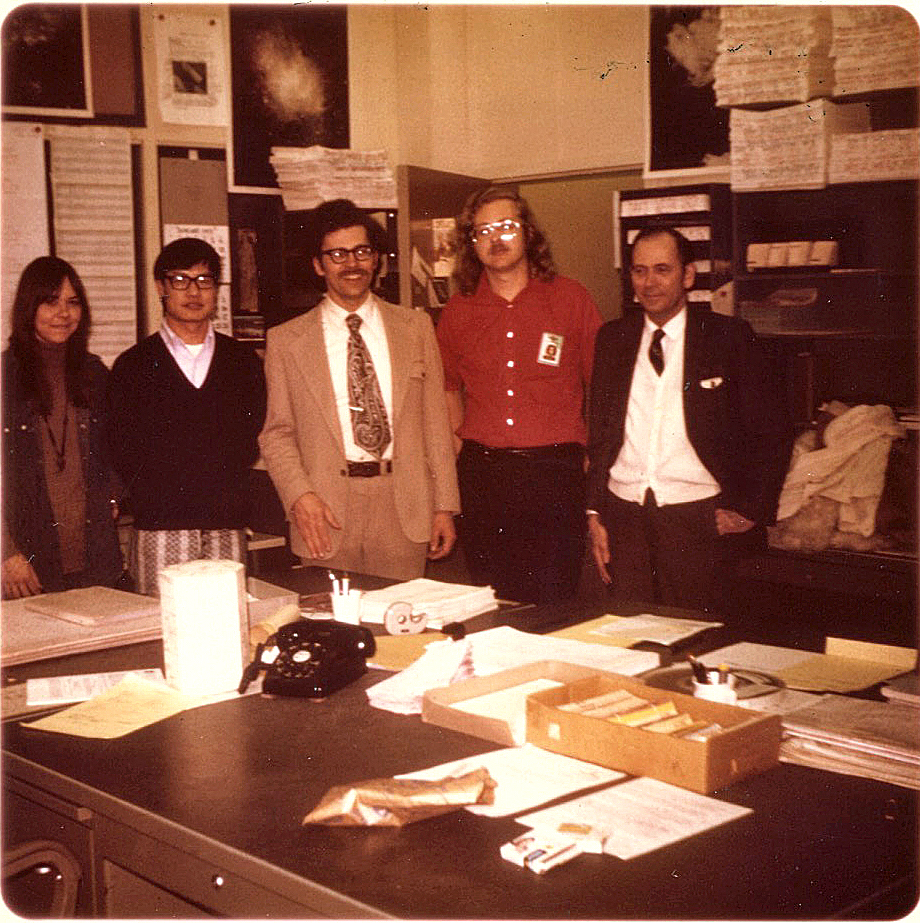
|
There were two OAO-As, both designed for the Wisconsin Experiment Package (WEP) and Celescope. Celescope was not ready when the first OAO-A was launched on Good Friday, 8 April 1966, so it contained WEP and a high-energy telescope. Once in orbit, it was renamed OAO-1. On Easter Sunday, 10 April 1966, it suffered a catastrophic failure. The failure was probably due to electrical system arcing when a high-voltage power supply was turned on before the spacecraft had completely outgassed. Radar observations suggest that OAO-1 had broken into three parts.
Grumman prepared the second OAO-A2 for service. Wisconsin prepared a backup WEP, Celescope was completed, and both flew successfully on 7 December 1968 on the mission named OAO-2.
OAO-B was dedicated to a ultraviolet spectroscopic package developed by NASA's astronomers at Goddard Space Flight Center. It had a 97-cm telescope with a spectrometer giving 1 Angstrom resolution measurements. OAO-B was launched on 30 November 1970, shortly after I joined the OAO-2 team. Unfortunately, the fairing, the streamlined shell that covers the satellite during the early minutes after launch, failed to detach from the rocket. The payload was too heavy to reach orbit, and fell back to earth, probably in the Indian Ocean. This was a ver sad day for the Goddard astronomers, but they soon recovered and began developing the International Ultraviolet Explorer. The IUE was launched on 26 January 1978, and went on to be a very successful mission.
OAO-C was designed to carry a 80-cm, UV telescope with a high-resolution spectrometer built by Princeton University. An X-ray telescope provided by University College London was a secondary instrument. OAO-C was successfully orbited on 21 August 1972 and subsequently renamed OAO-3 and Copernicus. Copernicus generated detailed data for bright stars and the interstellar medium for over nine years.
We held two parties at the Wisconsin apartment at Braebrook Village, across the street from Goddard. One was in 1972 when Charlie Wu’s girl friend, Liz, got her visa and was able to return from Canada. The other was at the end of mission, when we celebrated OAO’s accomplishments with a rehoboam of champagne as the centerpiece.
|
Gail (now my wife), Liz (now Charlie’s wife), and Charlie Wu |
Rosemarie of SCPS, and Gail at the WEP apartment |
|---|---|
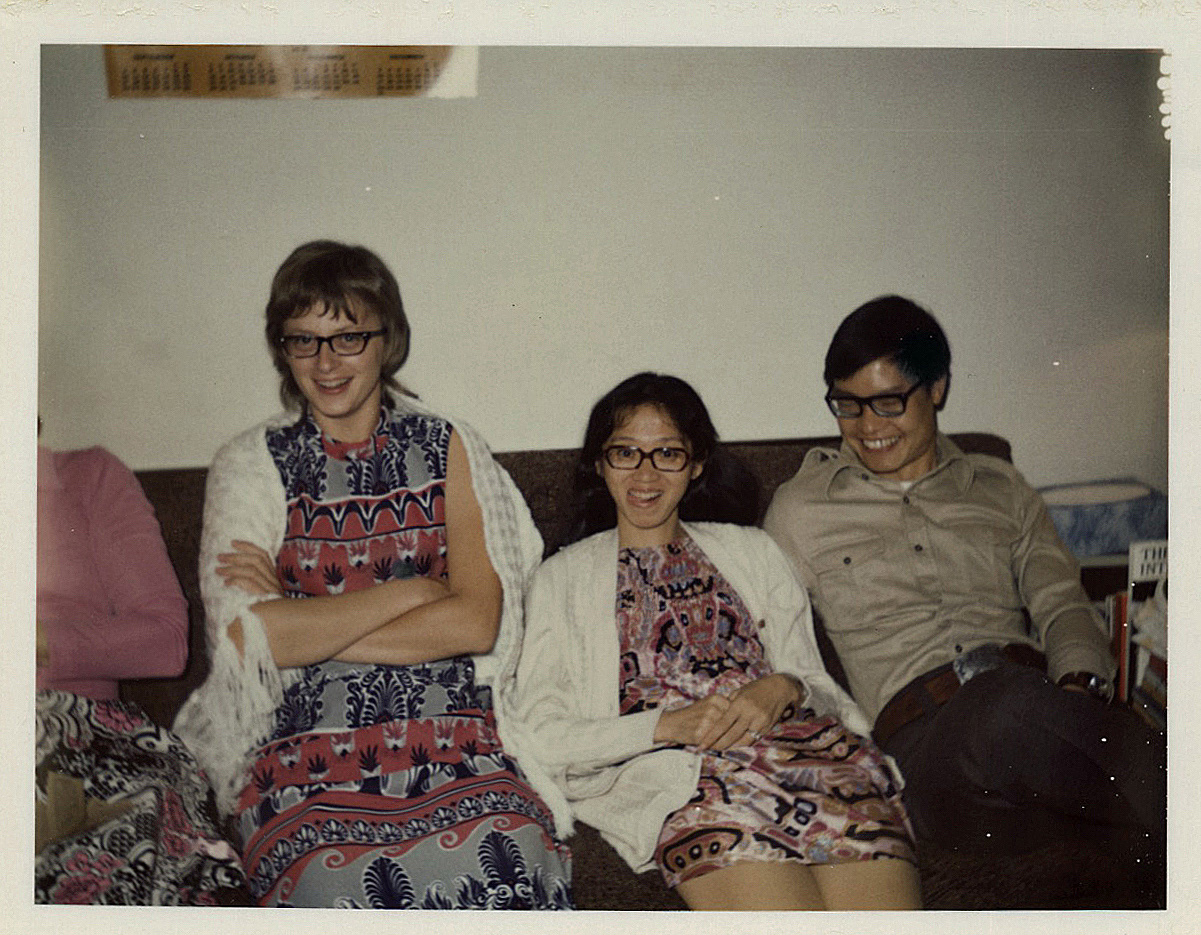
|
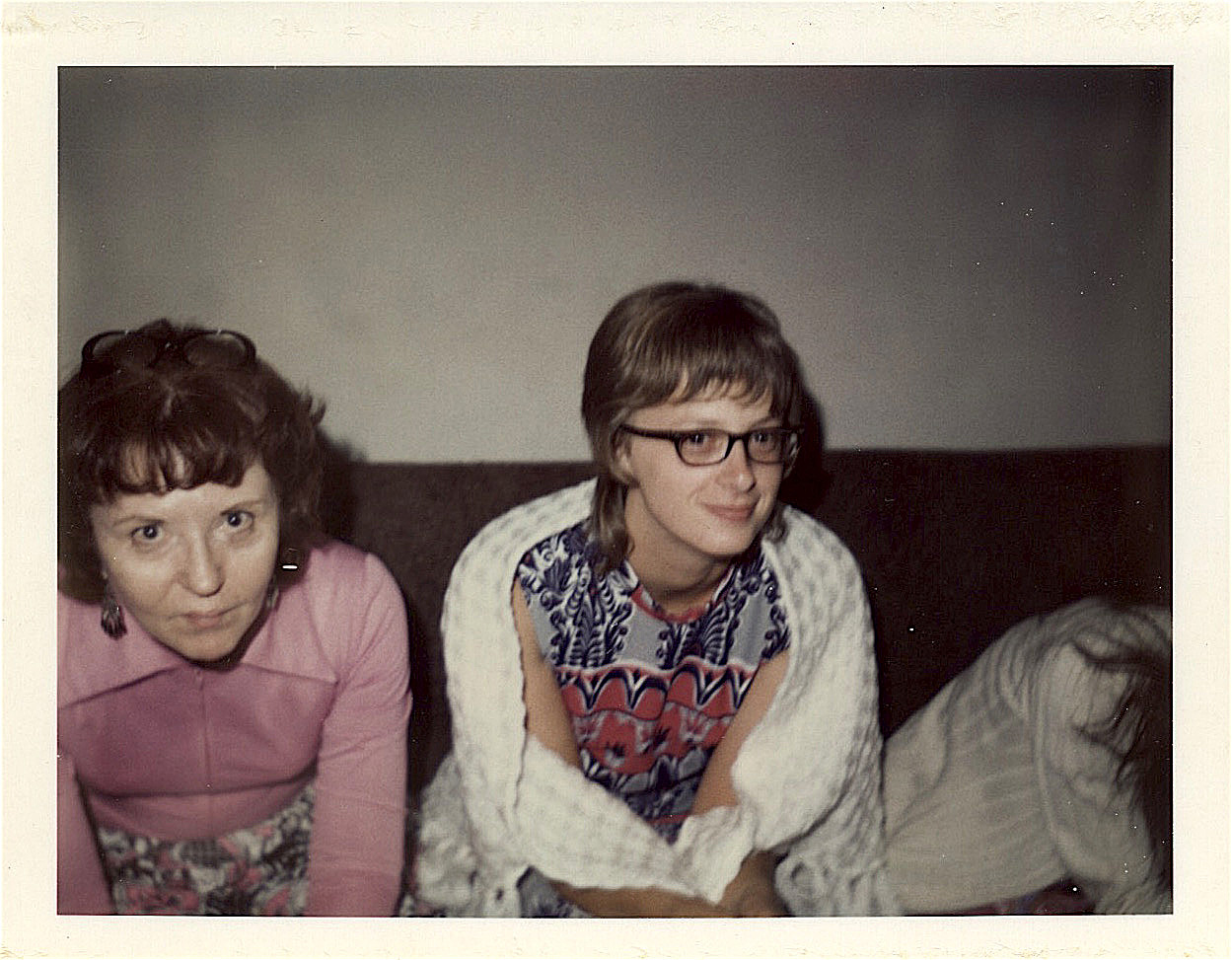
|
|
Wayne Putnam of Grumman |
Jean and Bob Peca of WEP |

|
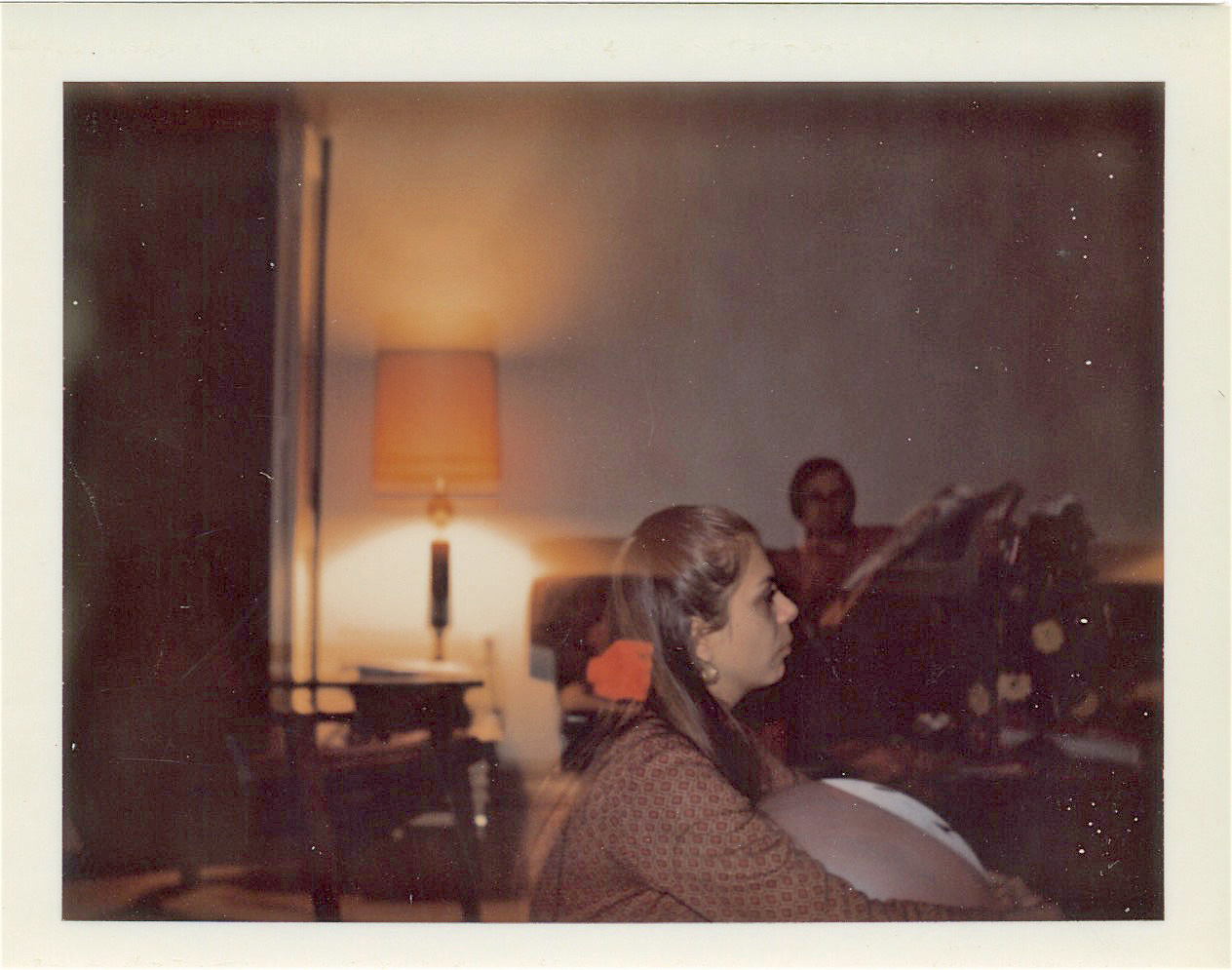
|
|
Sara Hunt of SCPS at the end of mission celebration |
|
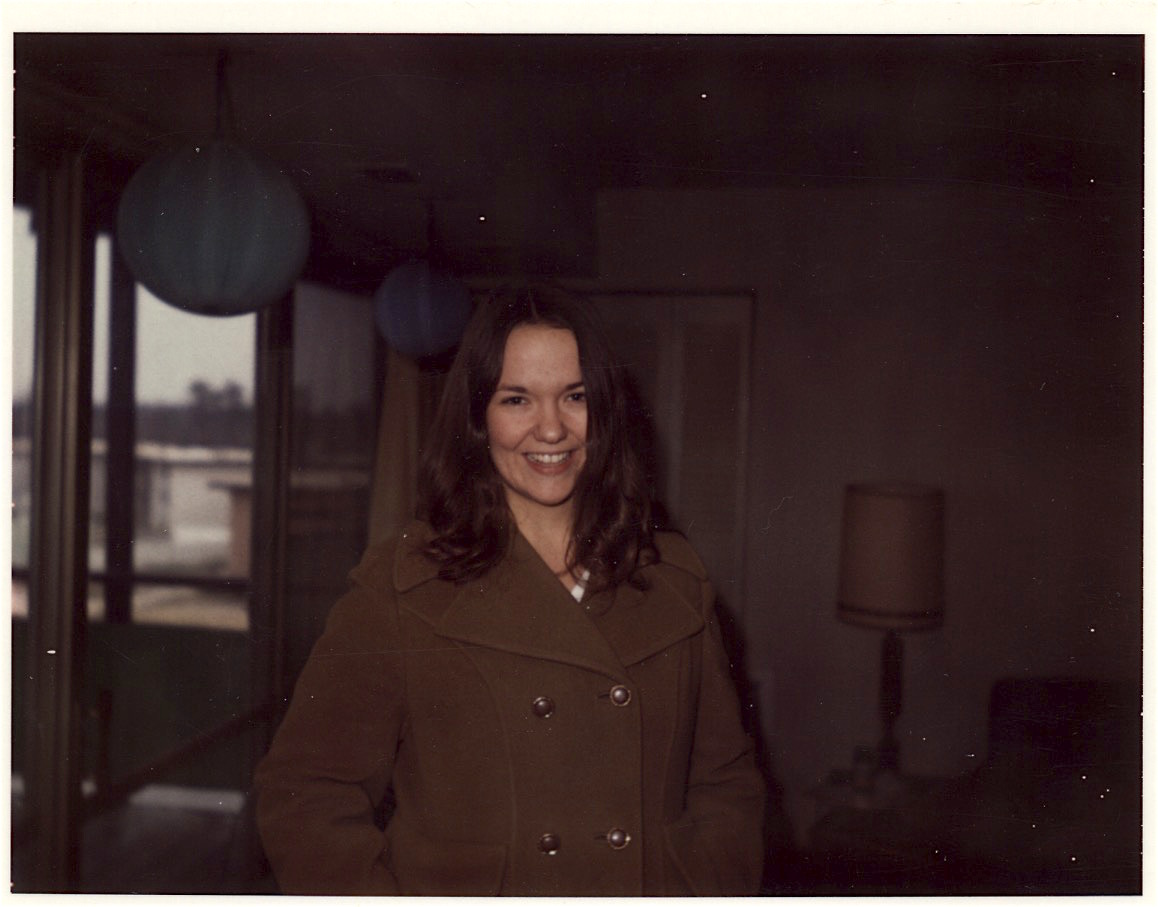
|
|
Very important for the scientific results from the WEP instruments was
being able to establish absolute fluxes from the measured count rates.
This was done by using sounding rockets to measure the fluxes of three
stars: Alpha Virginis, Eta Ursa Majoris, and Alpha Leonis. Then, by
measuring the count rates WEP’s instruments determined for these three
stars it was possible to transfer the calibration to the instruments
and, hence, to other observed targets.
Wisconsin obtained a research contract from NASA to improve the flux measurements of the same three stars used for calibrating the WEP telescopes, α Virginis, α Leonis, and η Ursa Majoris, by using a sounding rocket launched from the White Sands Test Facility. This was Aerobee 13.119. I assisted in this effort. One of the pre-flight issues was that the weight of experiment package made it impossible for the rocket to fly high enough to meet our minimum success requirements. The launch director at White Sands, a man named Bushy, painted a satirical image of us demanding that he mount the rocket on a higher platform, a stool, in order that we could achieve our minimum altitude. In the end, NASA put us on a more powerful rocket and renamed the mission Aerobee 26.059. The sounding rocket instruments were calibrated before and after the flight by measuring their response to synchrotron radiation from an electron storage ring at Stoughton, Wisconsin. Physicist Tim Fairchild was the leader in this effort. The rocket worked, reaching a peak altitude of 117.2 miles on 21 March 1977. Measurements were obtained on α Virginis and α Leonis twice, and on η Ursa Majoris three times. Unfortunately, the sensitivity of the detector decreased at some time between the pre-flight synchrotron calibration and the post-flight synchrotron calibration. The uncertainty about how and when that loss of sensitivity occurred made it impossible to achieve our goal of an improved stellar flux determination. I took the following photos, except for the one of the Aerobee 13.073 launch. |
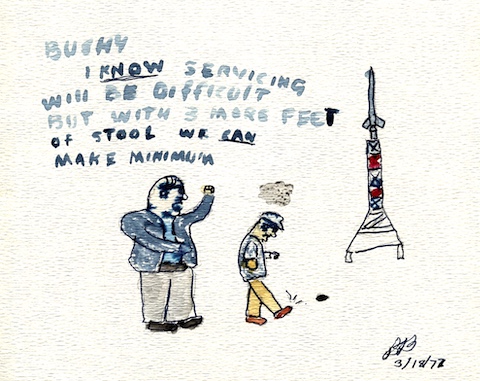
|
|
Tim Fairchild installing the detector at Stoughton |
Fairchild at one of the Synchrotron Storage Ring lines |
|---|---|
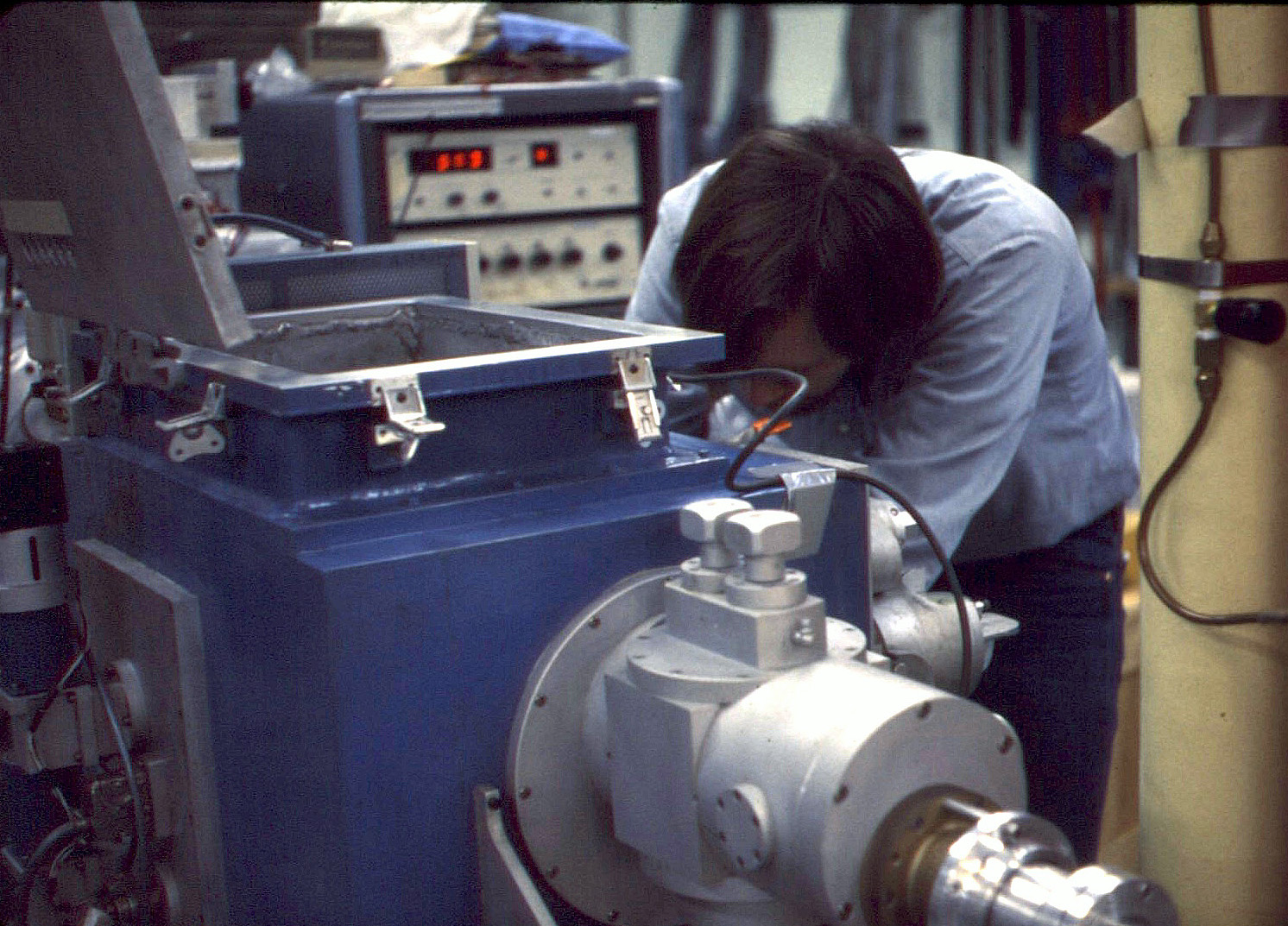
|
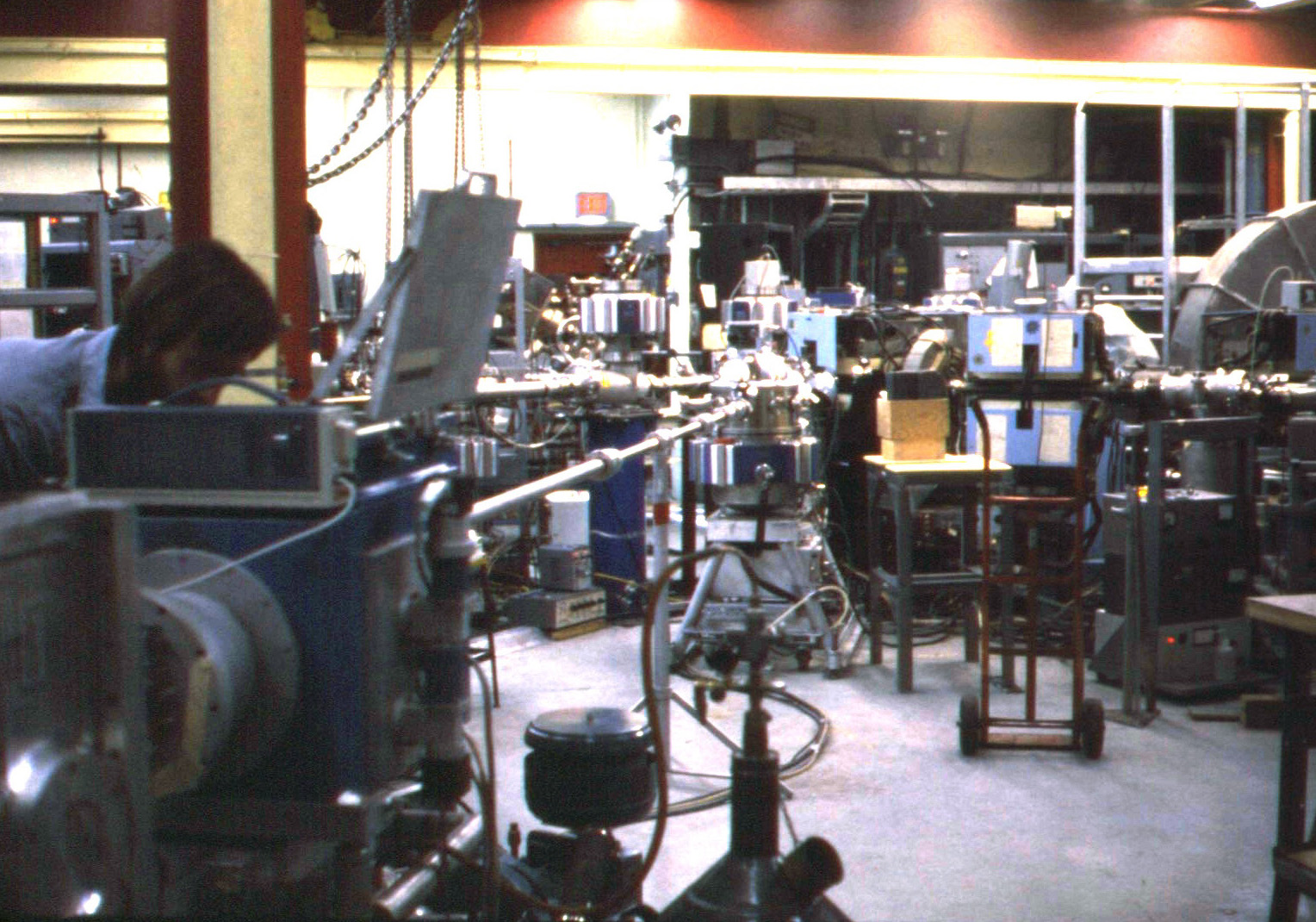
|
|
Our 1976 Aerobee rocket with payload in horizontal test, making sure that pitch and yaw are properly connected |
The Aerobee launch tower at White Sands
|
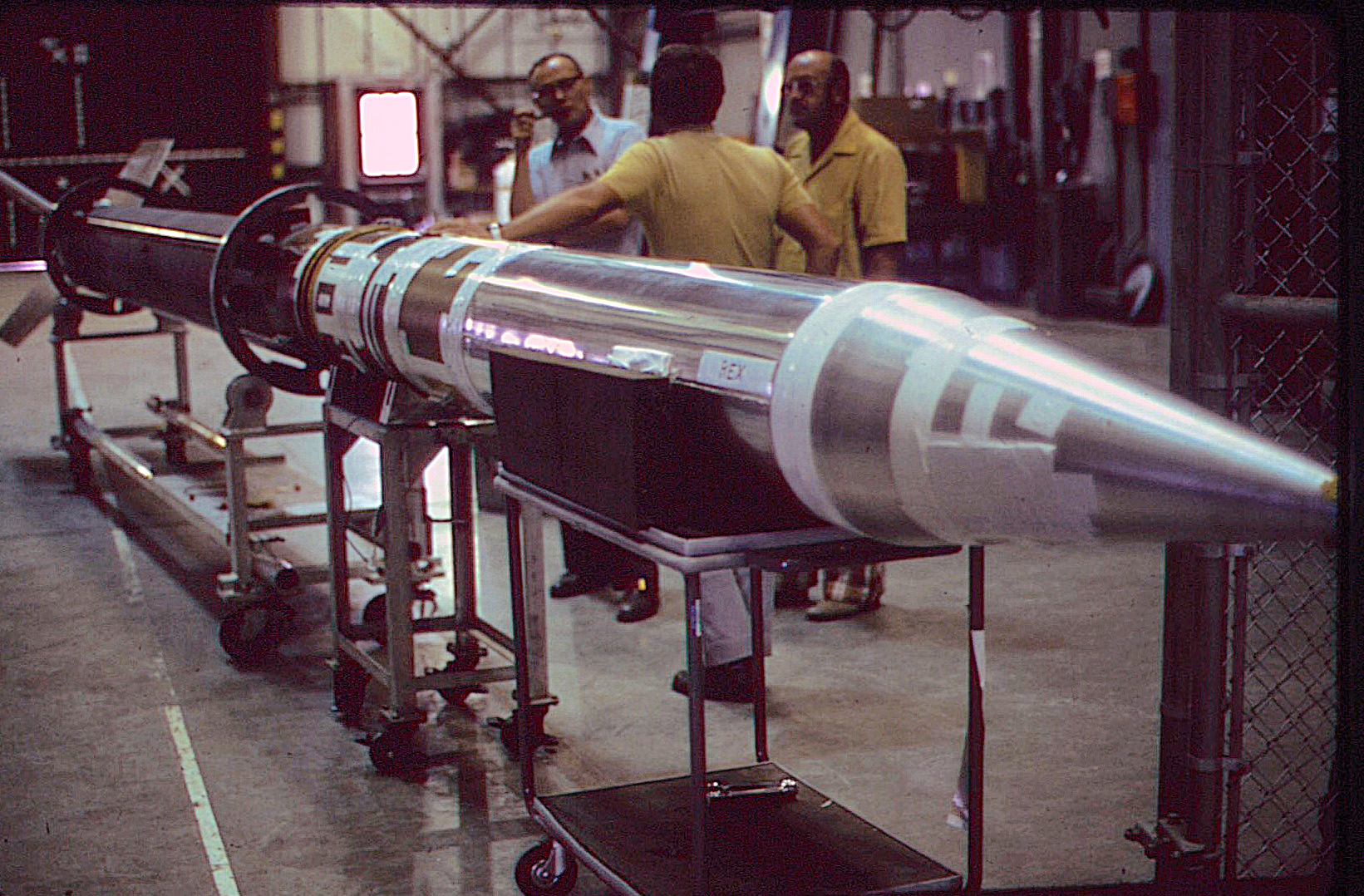
|
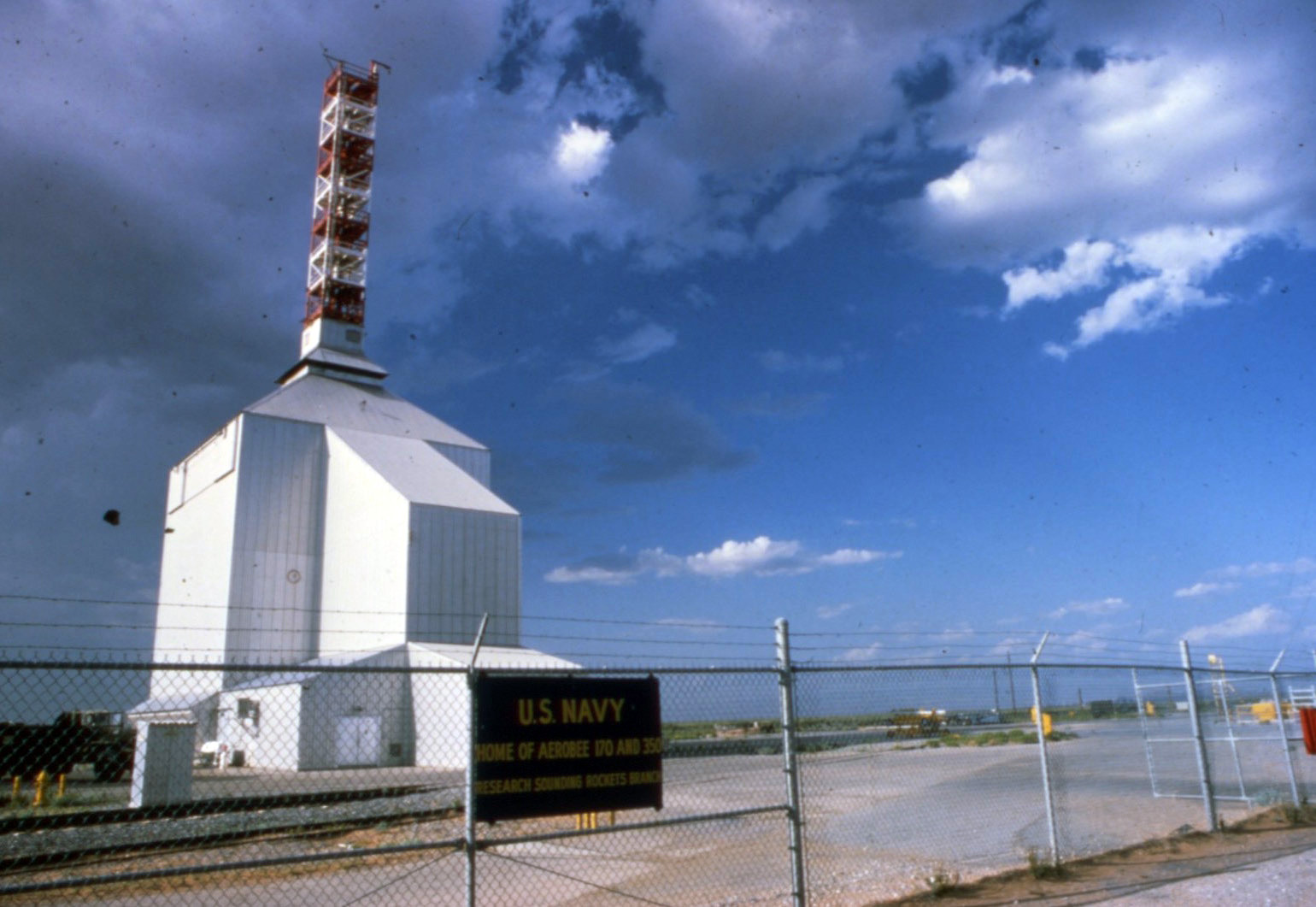
|
|
The our Aerobee on the rails in the launch tower |
A night launch - This was Ralph Bohlin’s 13.073, not Wisconsin’s
|
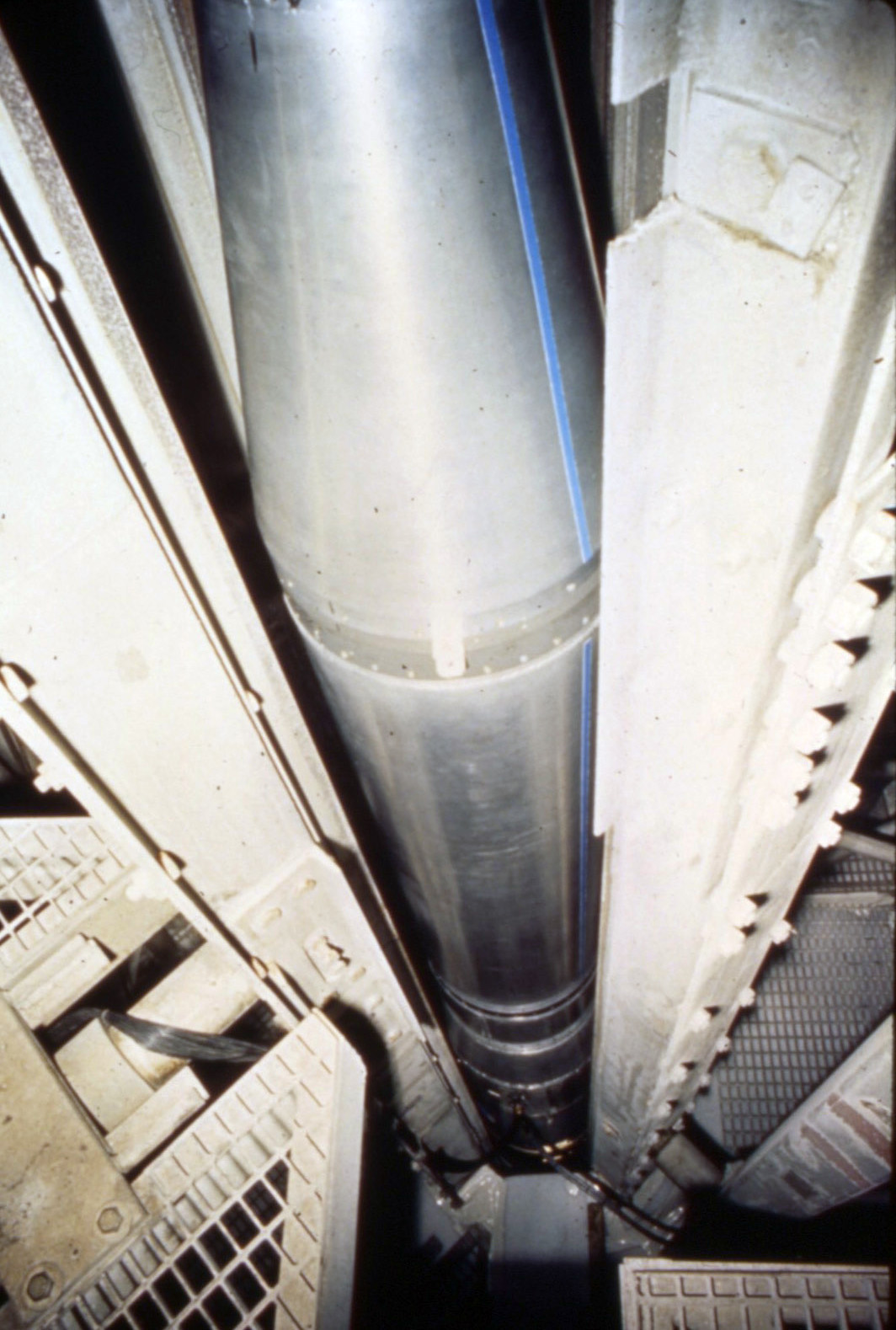
|

|
All the science results from OAO-2 were pioneering. Celescope surveyed 10% of the sky in the UV, and published a catalog of sources it found. WEP was used to observed Earth’s atmosphere, the Moon, planets, comets, zodiacal light, hot stars, cool stars, variable stars, planetary nebulae, interstellar gas and dust, globular clusters, and galaxies. A symposium was held at the University of Massachusetts that resulted in a publication with early 600 pages of data, analysis, and theory. Over 130 publications were based on and inspired by the WEP data.
|
Papers presented at the OAO-2 symposium |
Celescope’s Catalog of UV sources |
|---|---|
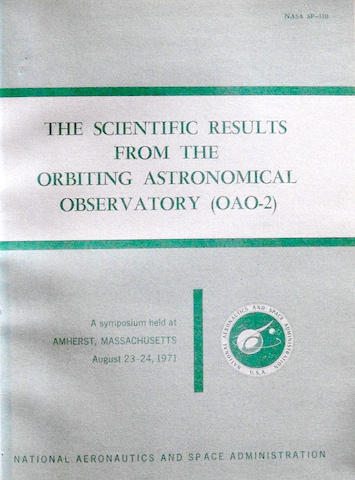 |
 |
|
Location of observations made by WEP |
Location of exposures made by Celescope |

|
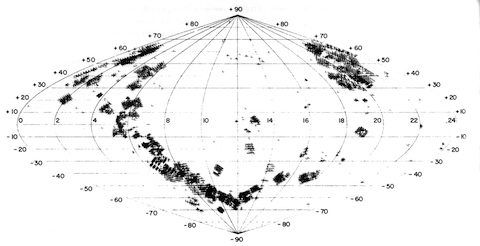
|
A celebration of 50 years of OAO-2 was held on December 7, 2018, at the UW Space Place in Madison, Wisconsin. Many of the people who developed and operated that spacecraft are gone. We’ve lost track of many more. But we were fortunate to gather a dozen or so who developed the Wisconsin Experiment Package, who operated it, or who analyzed and published data from it. Some worked at Goddard and some in Madison at the Space Astronomy Lab. We were joined by current members of the astronomy department as well as by Ray Cross, the President of the University of Wisconsin-System.
The photos below include staff who were resident at Goddard (Chuck Lillie, Albert Holm, and Charlie Wu), staff who primarily worked at at the Space Astronomy Lab in Madison (Ya-yue Van, Kathy Stittleburg, Curt Heacox, and Elton Waack), and astronomers who interpreted and published WEP data (Blair Savage, Joe Cassinelli, and Jay Gallagher). Others include physicist Dan McCammon, historian of astronomy Jordan Marchè II, Edith Ersland, the daughter of Bea Ersland who was the department secretary, and Keith Dunker, Ya-yue’s husband.
The University of Wisconsin highlighted the anniversary with a press release that includes an old NASA video and the interviews with astronomers and former staff about the mission .
|
Cover of the program for the anniversary celebration |
Page 2 of the program: The Legacy of OAO-2 |
|---|---|
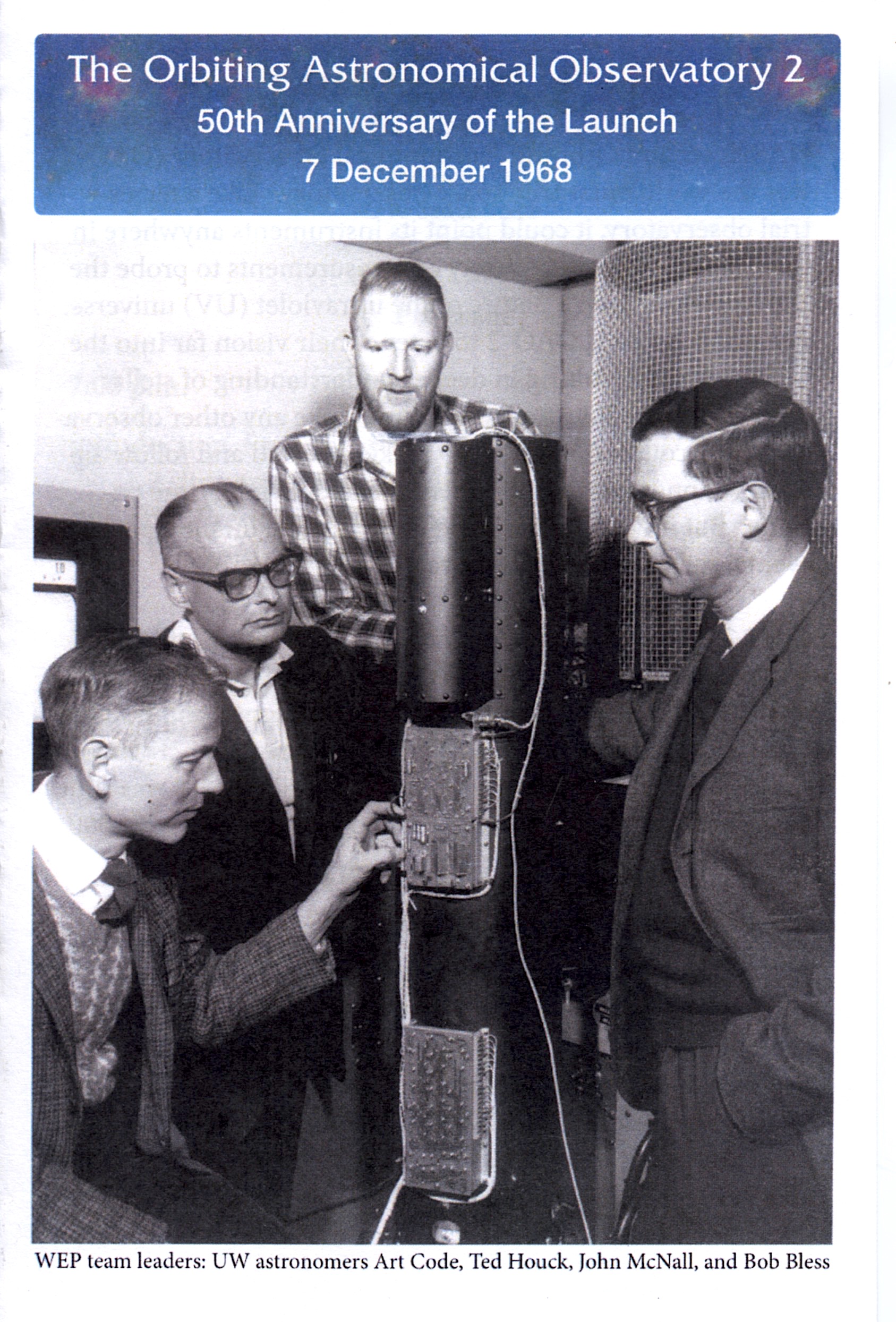
|
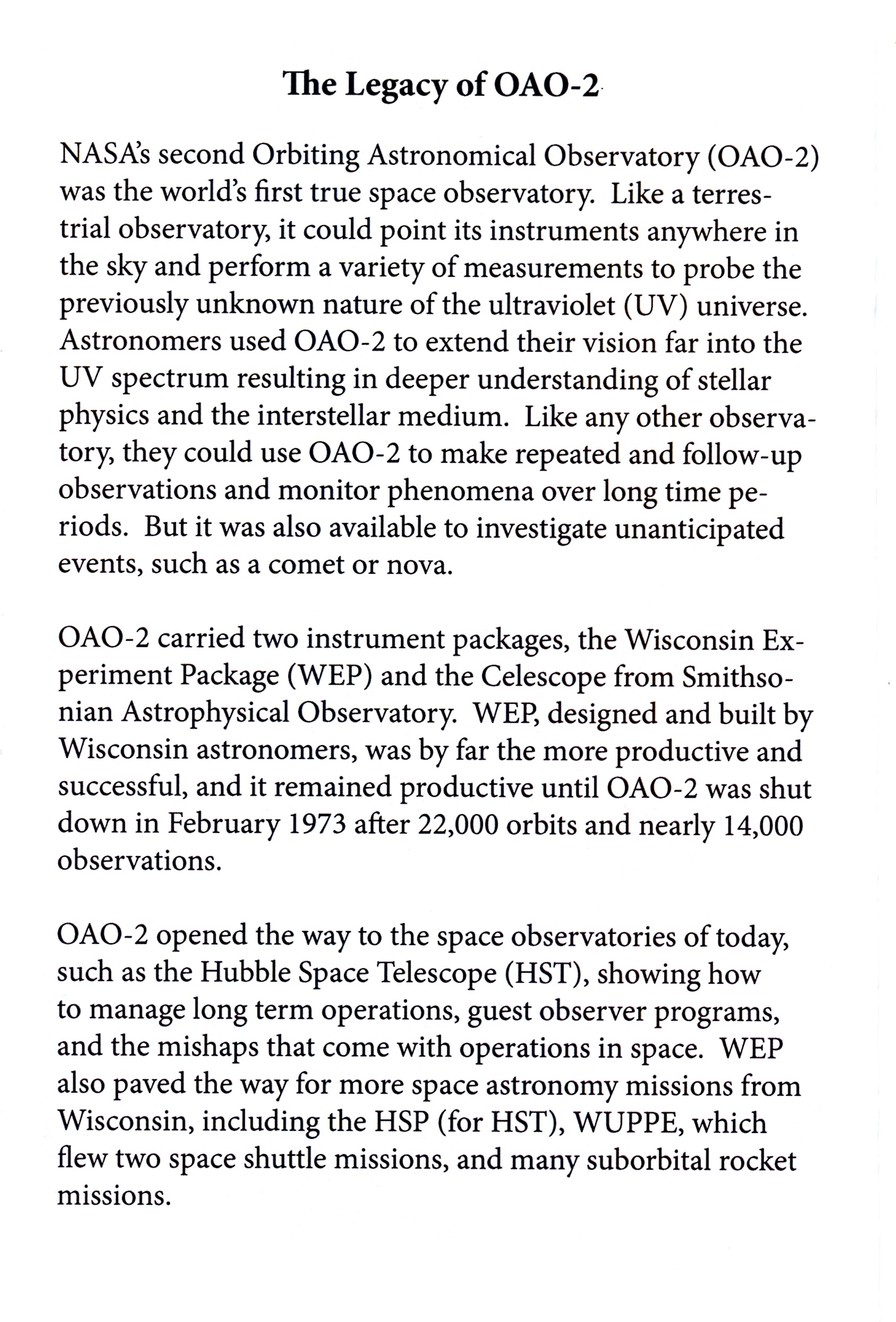
|
|
Page 3 of the program: Panel Discussion Program |
Back cover of the program for the anniversary celebration |

|
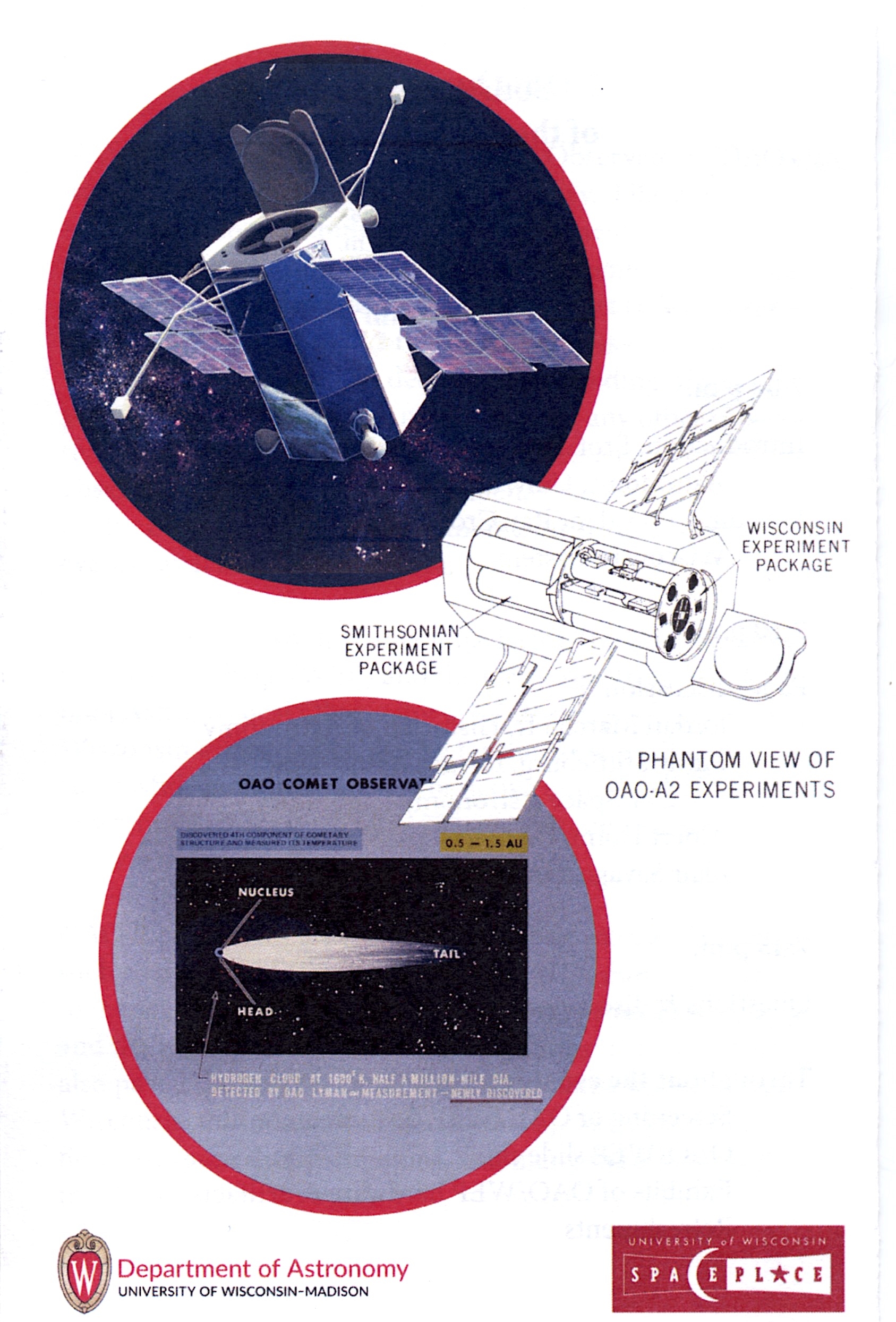
|
|
OAO-2 veterans at engineering model of OAO-2: Dan McCammon, Ya-yue Van, Chuck Lillie, Blair Savage, Al Holm, Joe Cassinelli, Charlie Wu, Curt Heacox, Jay Gallagher, and Elton Waack |
Chuck Lillie, Blair Savage, Charlie Wu, Albert Holm, and Curt Heacox
|
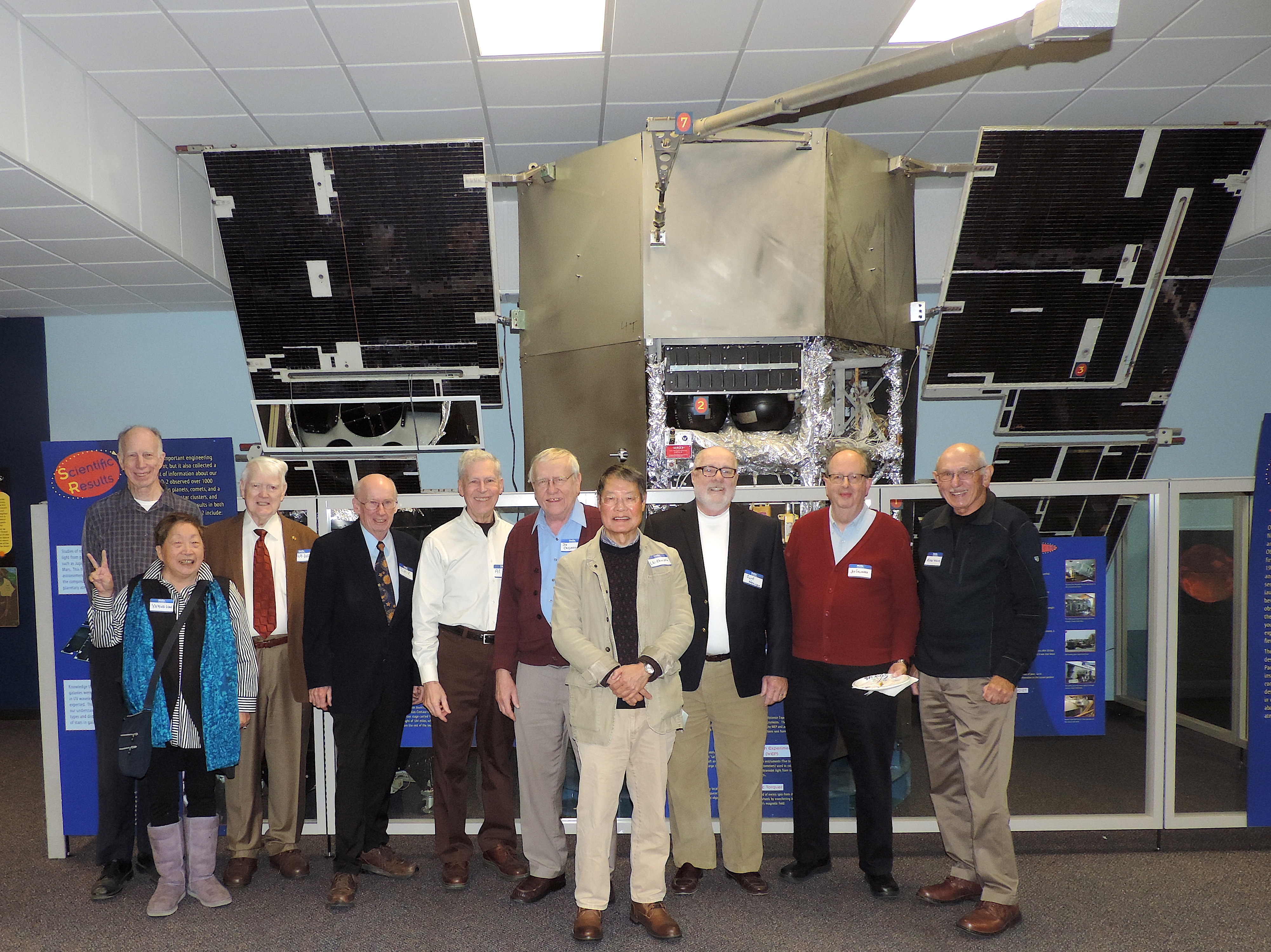
|
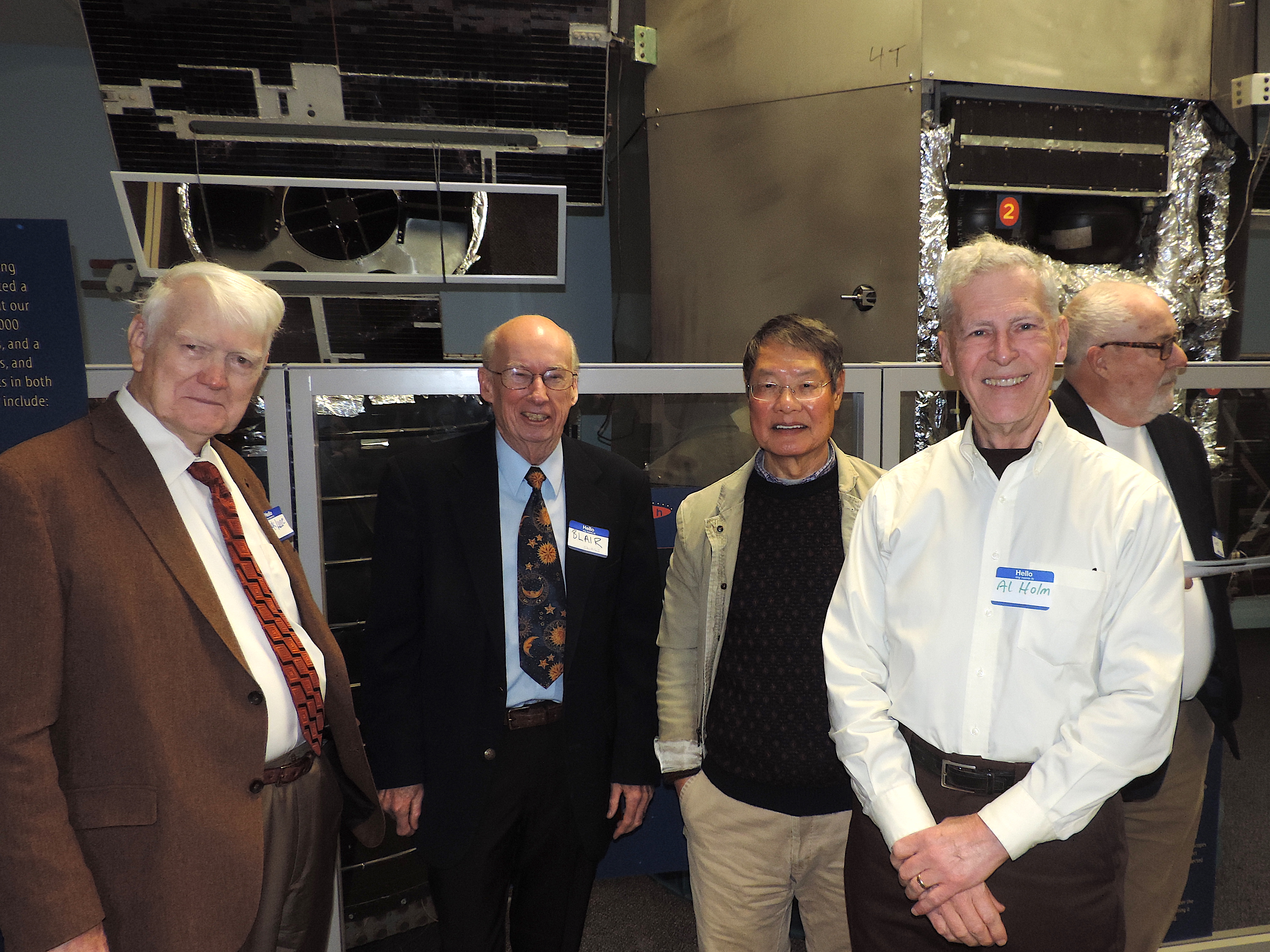
|
|
Chuck Lillie, Blair Savage, Joe Cassinelli, Charlie Wu, and Elton Waack |
Edith Ersland, Elton Waack, Kathy Stittleburg, and Curt Heacox |

|
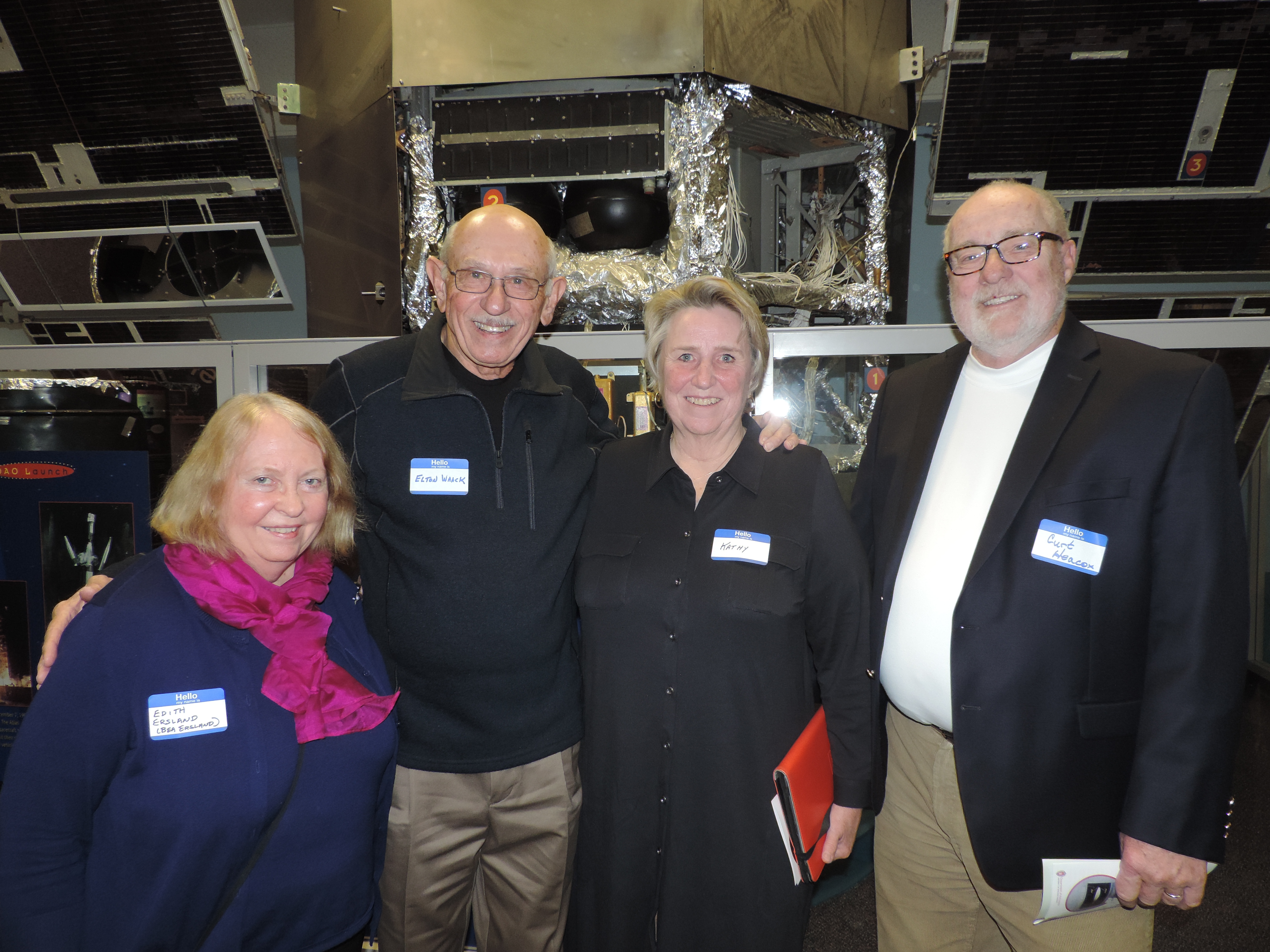
|
|
Panel members Albert Holm, Blair Savage, Kathy Stittleburg, and Jordan Marchè II |
Breakfast with friends and associates: Al Holm, Dan McCammon, Edith Ersland, Keith Dunker, Ya-yue Van, and Charlie Wu |
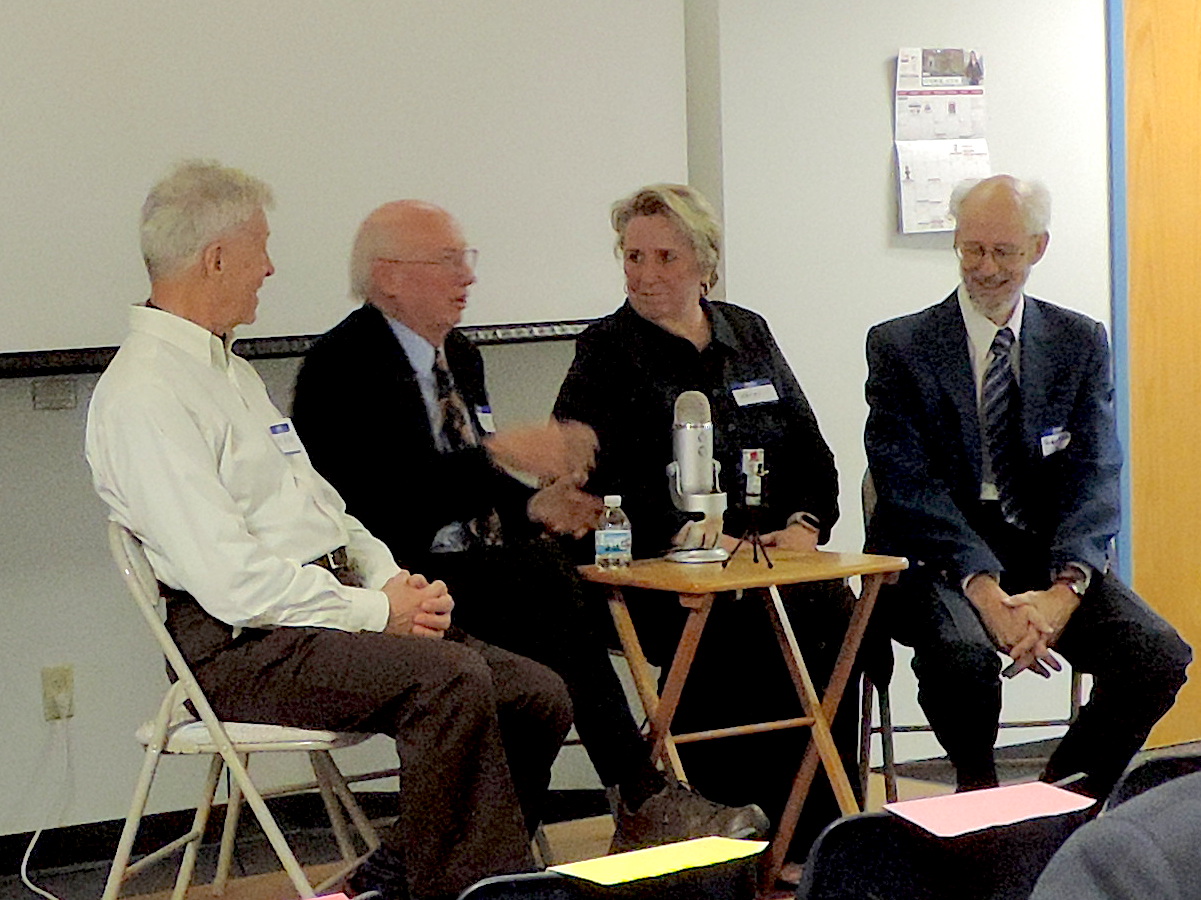
|
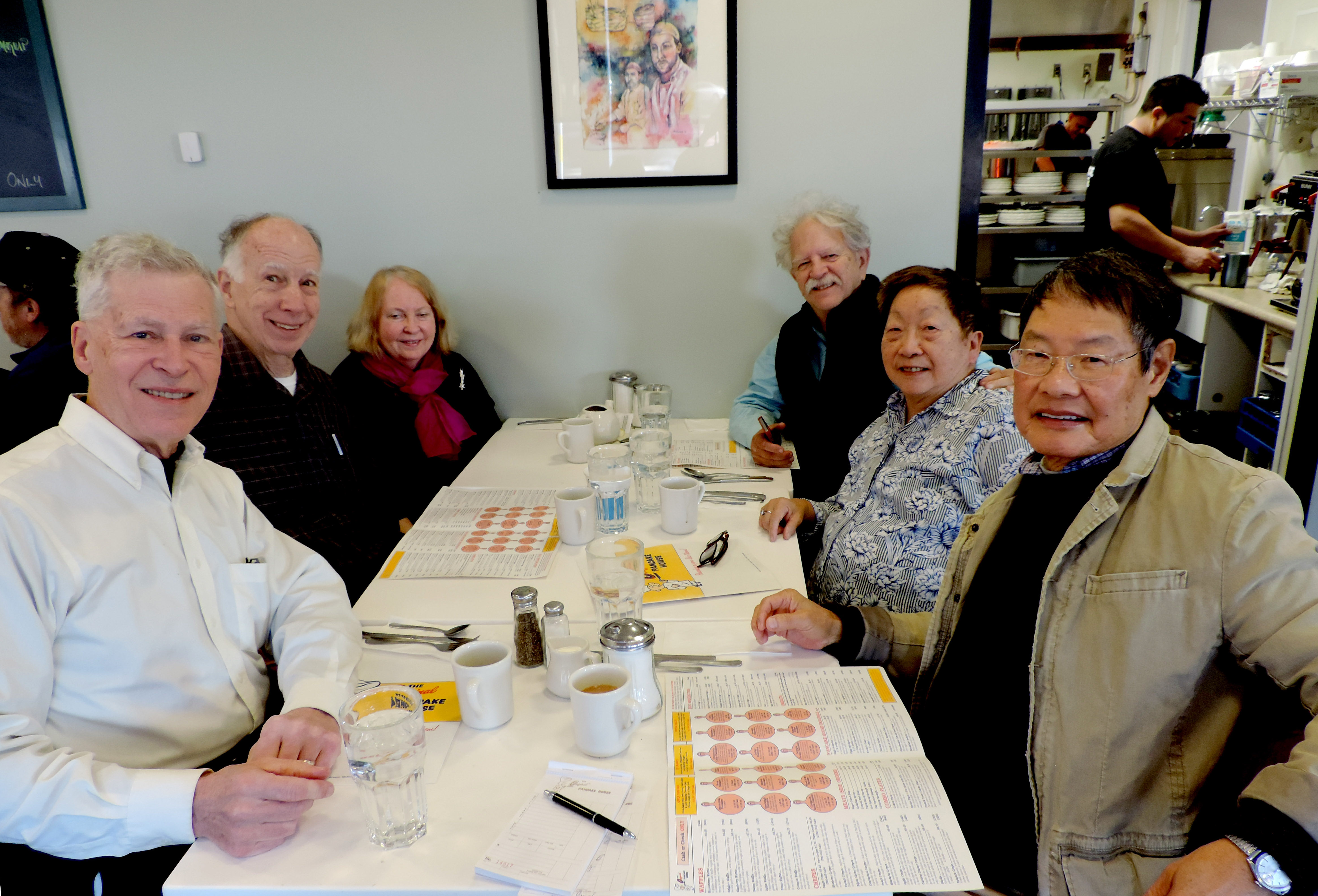
|
Prepared by Al Holm, 2 May 2017
Updated: 6 December 2025